CentrePort Canada






The CentrePort Canada Rail Park will be a game-changer in the transportation and logistics sector for Manitoba and Canada.
With its strategic location, state-of-the-art infrastructure, and efficient connectivity, the rail park is poised to enhance Canada’s competitiveness in the global market and generate significant economic benefits for the province and the country.
Focus Equities Inc. was named in March, 2022, developer of CentrePort Canada Rail Park, a 665-acre rail hub located in the heart of North America’s largest trimodal inland port and Foreign Trade Zone.
The rail park, in the RM of Rosser in the Winnipeg metro region, will facilitate the movement of goods between road, rail and air to provide a range of value-added services such as warehousing, distribution and customs clearance, and with potential to attract interest from diverse sectors including manufacturing, logistics and mining.

“Winnipeg offers companies engaged in global supply chain

Yes, it’s that time of year again. We have all complained about the winter we had. As I’ve often said, if it wasn’t for the weather, 95 percent of the people we know wouldn’t be able to start a conversation. The fact is, in this part of the world we have a lot of weather to talk about. In winter we might have snowstorms,
blizzards, icy roads, and frost bite. But summer is finally here and with it comes a list of things that can actually hurt us. Different kinds of bites. Time for a little tick talk. Did you know ticks are not in-


sects? They are members of the spider family. They need blood to survive. Any kind of blood. Some ticks love the blood of white-tailed deer. We have around 1,500 of those deer living within our city limits. The more deer, the more ticks. They will also dine on rodents (mice), small animals (your dog), birds and of course, you.
Ticks have curved teeth and they love a nice moist place to sink those
John Einarson
Gordon Lightfoot’s music meant so much to me for so many decades, from the time I first heard “Early Morning Rain” back in 1965. In the wake of his recent tour cancellations, it was as if the media were dusting off their prepared obituaries and tributes and updating them, sensing that his time was near. He passed away on May 1, 2023.
I have often said that Canada’s greatest contribution to popular music over the last 60 years or so has been singer-songwriters. While we have had significant musical contributors in a variety of music genres, beginning in the 1960s, Canadian singer-songwriters have come to define Canadian music to the world. Lightfoot was at the top of the heap, followed by the likes of Joni Mitchell, Ian Tyson, Neil Young, Robbie Robertson, Bruce Cockburn, Leonard Cohen and more. Unlike their American counterparts, Canadian singer-songwrit-







Follow us online at: whatsupwinnipeg.ca : Lifestyles55
Twitter: @Lifestyles55
PUBLISHER
Pegasus Publications Inc.
EDITOR
Dorothy Dobbie dorothy@pegasuspublications.net
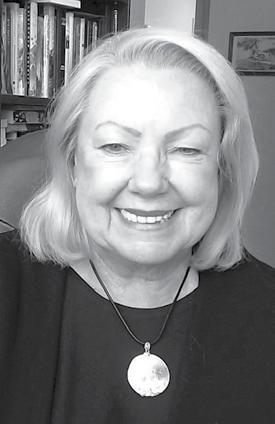
ART DIRECTOR Karl Thomsen karl@pegasuspublications.net
GENERAL MANAGER
Ian Leatt ian.leatt@pegasuspublications.net
CONTRIBUTORS
Gary Brown, Tim Chapman, Romel Dhalla, Dorothy Dobbie, Rick Duerksen, John Einarson, Hon. Myrna Driedger, Stefano Grande, Hon. Scott Johnson, Jim Ingebrigtsen, Hon. Kevin Klein, Ian Leatt, Myron Love, Jo Magnifico, Fred Morris, Brent Poole, Senaka Samarasinghe, Trudy Schroeder, Wayne Weedon, Sherrie Versluis, Nathan Zassman.
Canadian Publications mail product Sales agreement #40027604
ADVERTISING
1-888-680-2008 info@pegasuspublications.net
SUBSCRIPTIONS
If you would like to receive Lifestyles 55, we offer both monthly newspaper and online formats.


To place your order, call 204-940-2700. Subscriptions are $48.00 per year, plus tax. American Express, MasterCard, Visa and cheque accepted. To view a back issue online visit lifestyles55.net
Published monthly by:
Pegasus Publications Inc.
138 Swan Lake Bay, Winnipeg, MB R3T 4T8 204-940-2700 whatsupwinnipeg.ca
DISTRIBUTION
Available at over 100 locations from Winnipeg, Brandon, Steinbach, Morden, Selkirk, Flin Flon and The Pas. If you would like bulk copies of this publication, contact Ian Leatt at (204) 940-2707 or ian.leatt@pegasuspublications. net. Also available digitally at whatsupwinnpeg/ lifestyles and on Facebook: Lifestyles55
EDITORIAL SUBMISSIONS
Call Dorothy Dobbie at (204) 940-2716 or email dorothy@pegasuspublications.net for more information and guidelines.
Any opinions expressed in columns by our contributors are their own opinions entirely and are not necessarily shared by Pegasus Publications Inc. All information presented by the contributors is the responsibility of the writers.
Lifestyles 55 is published monthly. Reproduction in part or in whole is prohibited without seeking permission in writing from the publisher.
Copyright Pegasus Publications Inc.
Is working 10 hours a day when you are 78 a good idea that keeps you young and alive, or is it stupid and bound to send you to an early, well, perhaps not so early, grave?
While I am not as feisty as that 96-yearold who won the five km run (or was it a walk?), I am still, as the TV ad says, “pretty spry”. I have very few aches and pains and no body-changing deformities, except for a persistent tummy that appears to be very attached to me. As my daughter says, “At some point every woman has to choose between her ass and her face.” In my case, the choice was, you might say, before me rather than behind me. Oh well.
The point is that I am not alone. I have a host of friends in the same age category who look far better than I do and are in even better physical shape. They are all mentally and physically engaged, if not in some kind of productive employment at least in a myriad of other activities that keep them busy every day. Some volunteer in politics. Some are busy with consuming hobbies. Some garden, bike ride, climb mountains or row thousands of kilometers.
What the heck is this world coming to!?! Should the old stay old?
It is not that we do not deplore the state of current political narrative – identity politics, divisive labelling of individuals for the most bizarre reasons, tolerance for aberrant behaviour (not in the name of human rights but in the name of we-are-not-sure-what), but most don’t get too bent out of shape by these oddities, knowing that life has a way of coming full circle every few years.
Even those whose health is somewhat compromised are jumping into new lives at 80. I think of my friend Anita Neville (now “Her Honour”), the Lieutenant Governor of Manitoba. Despite her debilitating arthritis, she handles her duties and generously reaches out a hand to those who love being invited to Government House. I add that her predecessor, Janice Filmon, did the same, even though she had a few health battles along the way herself.
I recently attended an event with former politicians at Queen’s Park in Toronto and saw much the same story in the shining faces around me. And, oh, what stories resided behind those faces – some scandalous, some heroic, all still eager and interested and glad to see each other even though they may have sat on opposite sides of the House of Common or the Legislature in the past.
I think also of my friends who are not so fortunately engaged. Yet, many do all sorts of other interesting things: raising butterflies, studying foreign languages, taking up knitting or painting or singing – oh, yes, one of them joined a choir last year!
As for me, I work! I write for my dwindling number of publications to add to my meagre allotment of bread and butter. I learn and explore and ask questions and questions and questions, to the point where my physicist-turned-patent-agent son-in-law get very annoyed, because who can answer all those questions, and why do I doubt what everyone else simply accepts?
Sometimes after a 10-hour stint in the garden, I pay
the following day and I wonder, but, 48 hours later, the aches and pains are all gone and the delight from the labour is there to remind me that it was all worth it.
What else is worth it is the host of wonderful people all around me – not all of them of my vintage. For some reason, I very much like the company of young men who are so inquisitive and sensitive and willing to engage. They don’t seem to mind me either. I like the girls, too, but they are much more likely to be imparting their wisdom to me in the form of advice to older women. I apparently have much to learn and, of course, I am grateful.
In this publication many of my correspondents are older. I love them all, but I must single out two or three. Wayne Weedon occasionally gets me into trouble with his insightful and unusual views, all from highly educative sources. He knows whereof he speaks, this amazing Indigenous novelist. Read his serial novel each month. His heroine if a horny young runaway whose offer of sex, his older hero spurns. And his opinion about immature adults will set on edge the false teeth of some.
The sly humour of Jim Ingebrigtsen always delights, and we learn about our musical history from John Einarson. One of my new favourites, however, is Rick Duerksen who writes about his struggle with alcoholism. I hope he reads what Wayne wrote this month and feels a gentle pat of the back for what he has done. Myron and Fred are keeping us abreast of our town from back in the day. And I want you to learn about the rest of the province, particularly the North so sometimes you will hear from Flin Flon or the Pas or Thompson. The Arts always have space when they need it and I care about development so there is news from CentrePort or stories about opportunities. I love the Peace Garden and Tim Chapman keep us up to date while Trudy Schroeder shares her wisdom after a life of service to the Arts.
Yes, this paper has a political bias. I am a Tory, in case you haven’t noticed, so I rope in every Tory willing to write for me, but I have also enjoyed our late and much missed NDP Bill Blaikie and occasionally, Jerry Storie, and others. I have a new Liberal victim in mind for a column. If he says yes, you will be delighted with this interesting character.

I do want you to get to know that remarkable young woman who has sacrificed her life to us as Manitoba’s first female premier. I knew and loved Heather Stefanson’s parents. They instilled an iron will in their daughter that she has now put at our service, and I am grateful for that, too.

Life is good. People are good. Just give them a chance and try not to be too judgmental. Most don’t mean to be mean even when they seem to be mean. Life sometimes just squirts lemonade in your brain. Take it with a spoonful of sugar. It helps the medicine go down.
Have I meandered on? Must be the summer breezes are muddling my mind, but occasionally, we all need a break from the usual rant. Have a beautiful summer everyone.
2707 or
Dear friends, Throughout the month of May, I had the privilege of engaging with seniors in our community, and it has been an enriching experience that reaffirms the importance of their well-being and quality of life. As the Minister of Seniors and Long-Term Care, it is my utmost priority to ensure that the needs and aspirations of our seniors are heard and addressed.
One memorable event that stands out in my mind is the Doctors Manitoba Gala Dinner. It was a joyous occasion, where I had the opportunity to express my gratitude to our dedicated medical professionals who provide exceptional care to seniors across the province. The Gala Dinner brought together passionate individuals who share the common
goal of enhancing healthcare services for our seniors, and I was truly inspired by their commitment.
Another highlight was attending the announcement at Portage Place alongside our Premier and colleagues.
Hon. Scott Johnson Minister’s MessageIt was an exciting moment as we shared our government's commitment to healing healthcare in our province. We are proud to support the transformation of Portage Place into a dynamic Health Centre that will offer a range of vital services, including housing, grocery stores, and community amenities.
During Grace Hospital Day, I witnessed firsthand the tremendous impact the Grace Hospital Foundation has on our community. Their unwavering dedication and hard work contribute significantly to the well-being of seniors. Notably,
the Grace Foundation raised an impressive sum of money, a testament to the generosity and compassion of our community members.
One event that holds special significance for me is the 17th annual Long Term & Continuing Care Association of Manitoba Provincial Conference and Exhibition. It was an honor to bring greetings and acknowledge the remarkable efforts of LTCAM over the past 60 years. They have been a valuable partner in promoting safe and quality care and living options for seniors in Manitoba. Their commitment is truly commendable, and I am grateful for their contributions.
Celebrating milestones is essential, and I was delighted to attend the 30th anniversary of the Good Neighbors Active Living Centre. This organization has been instrumental in serving the older adults of our community, providing support, companionship, and activities that enhance their overall well-being. Their dedication and commitment to seniors' welfare are
deserving of recognition and applause.
Lastly, I had the privilege of attending the Association of Regulated Nurses of Manitoba's 2023 AGM & Celebration of Excellence. It was an opportunity to express my gratitude to our nursing community for their tireless efforts in caring for seniors. Their expertise, compassion, and dedication are essential components of the healthcare system, and I commend them for their exceptional service.
As I reflect on the past month, I am filled with gratitude for the connections made, the stories shared, and the inspiring individuals I met. It is through these interactions that I gain a deeper understanding of the challenges and aspirations of our seniors. I remain committed to advocating for their needs and working towards a future where all seniors in Manitoba can live with dignity, respect, and the support they deserve.
Hon. Scott Johnston is the Minister of Seniors and Long-Term Care.

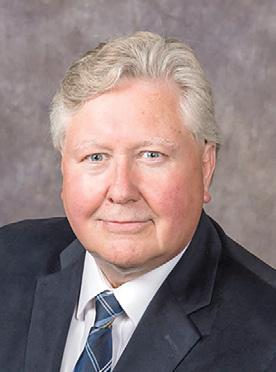
Politics shapes our world, influencing policies, decisions, and the overall direction of a society. While political participation has often been associated with older generations, it is essential for young people to engage in politics actively.
One of the primary reasons we need young people to get involved in politics is to amplify their voices and perspectives. As future leaders and inheritors of societal challenges, young people possess unique insights and fresh ideas to help reshape policies.
Hon. Kevin Klein From the LegislatureWe know young people can bring attention to issues affecting their generation, such as climate change, student debt, and social justice. Participation of young people ensures a more inclusive and diverse decision-making process. That may result in well-rounded policies that address the needs of all citizens.
Political decisions often have long-lasting
It’s a beautiful morning, sitting on the deck with my morning coffee, looking around at my surroundings. The deck needs a little work I think to myself. Many questions you may also have pertaining to your deck were racing through my mind.
Do I need a permit to build a deck in Manitoba?
• Yes, without a doubt, a permit is required! Decks require a development permit as per the Winnipeg Zoning By-law. Decks are defined as structures with a total area of more than 3.4 m2 (36 sq. ft.) located in the back or side yard that are more than 600 mm (2'0”) above ground level.
What happens if you build a deck without a permit in Manitoba?
• No matter if you complete the work yourself or pay a contractor, any work carried out without a building permit may not meet the minimum building code requirements and could result in substandard construction. Nobody wants this because it could lead to major repairs to correct the problem. Work that does not comply with the building code will require removal.
Would it be cheaper to build my own deck?
• Building your own deck will cost half the price that it would cost if you hire a contractor. As with any ‘Do It Yourself’ project, you're only paying for materials
consequences that disproportionately affect younger generations. Economic inequality, climate change, and social justice require sustainable and forward-thinking solutions. When young become engaged in politics, they can help shape policies that promote intergenerational equity, ensuring a fair and just society for all.
I strongly believe in the value of diverse voices and perspectives in politics. We must actively seek to increase youth representation and promote inclusivity within the party structures. I recognize that young people have unique experiences and ideas that can contribute to shaping policies and decisionmaking. We have children and grandchildren. I will fight to make Manitoba an affordable place for them to live, work, and start a family. It is no secret that we cannot tax and spend our way to a prosperous future. It’s
and your own time. But the cost of materials varies widely based on the deck you choose and the shape and size of the deck.
Why is building a deck so expensive?
• Why are decks so expensive? Labour, building materials, and extra fees like removal, permits, and demolition, all add up to create a price that maybe you did not expect. Set the right budget for the job. Can you build a deck yourself?
• Building your own deck is a great way of transforming an outdoor area into a space perfect for entertainment. Believe it or not, it is not as hard as it seems. All you need is lumber, some materials, and the right tools for the job. Planning the size and getting your hands dirty is all part of the fun.
What is the cheapest way to build a deck?
• Pressure-treated wood is generally the cheapest material to build decks from. For up-front savings, that seems great, but don't forget long-term costs. Wood decks require annual maintenance such as staining, and they'll often break down quite quickly if you fall behind on maintenance. A useful tip is to never apply paint to a deck. It may look clean and pretty but if water gets under the paint it leads to rotting boards very quickly.
How much is labor to build a deck?
• The labor cost to build a deck runs,
not fair to our young people. We cannot take on more debt to pay for votes today and put that burden on our children and grandchildren.
We are committed to addressing the concerns and priorities of young people. Affordable housing, education, job opportunities, mental health, freedom, and inclusion are particularly important to the young demographic.
Historically, young people have been marginalized in political spheres, with their perspectives dismissed due to age-related biases. Let’s change that together. I welcome the input of our young people and make myself available to them as well as every resident I represent. Please call my office at 204-8882211 or email kevin@kevinklein.ca.
The Hon. Kevin Klein is the MLA for Kirkfield Park and Minister of Environment and Climate Change.
on average, between $15 – $35 per square foot. Deck materials that are easier to install, like cedar or treated lumber, are cheaper.
What is the average price of a deck?
• The average deck in Winnipeg costs are as follows:
o Treated wooden decks - $36 - $50 per ft2.
o Cedar decks - $40 - $57 per ft2.
o Composite decks - $66 - $77 per ft2.
o PVC decks - $69 - $87 per ft2. Does a deck need to slope away from house?
• When building your deck, always be sure to slope it away from your home to keep any foundation issues from arising. Nobody wants water draining toward the house. Once your deck is properly built and sloped, you're ready to apply a waterproofing system. Depending on the kinds of materials you used in building your deck, your waterproofing could vary.
What is a floating deck?
• A floating deck, also known as a ground level or freestanding deck, is a deck that is not attached to any building or structure. It is a standalone structure that is built on top of the ground and is not anchored into the ground like a traditional deck.
Do I need gravel under my floating deck?
• Floating decks can be set directly on the ground or, preferably, a bed of gravel. But it's best to support the deck on concrete blocks. This keeps the wood off the ground and away from moisture, so the wood lasts longer.
Do you need air flow under a deck?
• This is why proper deck ventilation becomes essential. There should be a good flow of air across all the four sides so that the wood can move evenly. If there is a restriction of airflow even on just one side, the board or boards will contract or expand unevenly. This will then lead to a twisting, warping, and buckling deck.
Do decks add value?
• According to the 2021 Cost vs. Value Report from Remodeling magazine, a deck addition is a top 10 outdoor home improvement. A wooden deck, which will cost on average about $16,766 will recoup about 68 percent of its value, and a composite deck, which will cost about $22,426, will recoup about 63 percent should you sell your home.
Deck building can be incredibly rewarding, both the process of constructing it to the finished product. A beautiful, well designed deck can expand your living area in all seasons, bring family and friends together, and provide the ever-warranted hang-out space where you simply take in the glory of the outdoor world ,like me, and enjoy your morning coffee.
Too many homeowners make deckbuilding mistakes that can ruin their enjoyment or, God forbid, compromise their safety. Don’t fall foul to the many pitfalls that plague homeowners building decks. If you are confident in your ability, go for it, if not, connect with your local contractor.
Brent Poole is the owner operator of Handy Hands Construction, which he has run with his father Jim since 1997. A carpenter by trade, Brent enjoys all types of projects. “We’re not happy until you are happy!”

The deck – all you need to know!
To celebrate the 100th Anniversary of St. James (starting just west of St. James Street to Sturgeon Road) breaking away from Assiniboia to form their own municipality, I am doing street profiles. This column features Kensington Street.
An October 9, 1961, Winnipeg Free Press story about the expropriation of homes and businesses for the St. James Bridge Expansion is one of the most informative newspaper archives about an important part of St. James history. St. James Mayor Tom Findlay is quoted as stating that 20 businesses and 65 homes would have to be expropriated. The businesses that ended up being expropriated included the Piano House, a Chicken Delight store, All State Insurance, Carman Ruttan's Drugs, and a church at 247 Kensington. There had been a church on this site for almost 50 years.
Later in October 1961, Findlay would lose his bid for re-election.(1) For several decades, it appeared that this expropriation had been totally necessary. However, in 2013, the City of Winnipeg, despite strong community opposition, constructed a Fire Hall inside the 1962 Cloverleaf at 1705 Portage Avenue. During the middle 1980s, the rest of Kensington between Portage and Ness was demolished to make way for Madison Square.
Was this development meant to create an East St. James's meeting place? Prior to these two major expropriations,
Kensington had already been a meeting place featuring a community club, church, small grocery stores, and public gatherings in private homes.
In 1916, Border Community Club began as an outdoor rink with a small warming shack.(2) During the early days of the club, Charles Dipple, a volunteer, always had candy for the children. In 1938, a new clubhouse was constructed. The Club hosted pre-teen dances, teas, moccasin dances on ice, a junior girls sewing club and winter carnivals. The club is remembered for its pee wee hockey. The Club operated a five-team league.
On January 30, 1943, the Club held a Booster Night. Well known hockey players Bill Juzda, and Danny Summers helped with the coaching. In 1963, Border Community Club was demolished as part of the St. James Bridge expropriation. The Club moved to its current location on Hampton Street. In 1975, Border and the Collegiate Street Airways Community Club merged, becoming the Hampton Street Bord Aire Community Club.
During the 1930s, some Kensington Street residents hosted public gatherings in their homes. In 1933, Emerson Talanadge and Livinia Chapman held meetings and dances of the Winnipeg Highland Association Private Homes in their home. Also, Mr. and Mrs. George McKenzie hosted similar Highland events. In 1935, Mrs. Thomas Brown housed a Whist Drive for the Ladies Auxiliary of Canadians War Disabilities Pensioners.
During the 1920s, the Children of
Kensington Street were often featured on the Winnipeg Free Press Children’s Sunbeams Page. In 1924, Harry Schneider won first prize in naming the picture His Name's not Backus. Harry's caption was "He's not trying to stop the flow."
In 1927, Dorothy Fleming won a colouring contest. In 1929, Miriam Shepton wrote a letter about her cat Cutie. Cutie will be in the St. James Pet Hall of Fame which is part of this project. Other children mentioned were George Rendall, Annie Cobb, Charles Sephton, Billie Rose, and Matt Shepton. In 1952, John Cliffe was awarded a British Government Athlone Fellowship for his work on gas turbines. Another human-interest story about Wilhelmina Joel's garden with its large cucumbers was told in a 1955 archive of Free Press Smedley's Corner.
A couple of young people who grew up on Kensington left us far too soon. In 1936, Thomas Ruttle died at age 21 from heat stroke suffered at the Polo Park Racetrack. Thomas had been member of the Winnipeg Deaf hockey Team.
Leonard Shakespeare became a St. Boniface Police Officer. In 1969, Leonard, age 26 was tragically murdered on duty while responding to an armed robbery. A residential Windsor Park Street is named in Leonard's Memory.
I found two acts of heroism in the archives. On July 16, 1942, Mabel Johnson was seriously wounded in a robbery of her small grocery store just south of Ness and Kensington. Fanny Hamilton put her own life in danger assisting Mabel until a doctor and St. James Police arrived. In December 1951, Lee Frankham, a resident of Kensington Street and a pilot for Riverton Airways, rescued Willard Olson who was trapped on George Island on the northern tip of
At the time of his 1923 passing, William Armishaw was the President of the Great War Veterans Association of St. James (now the St. James Legion).
Many residents had impressive longevity records in their jobs. They included:

Robert Parker 32 years at Winnipeg Electric, Charles Dougherty 39 years at CNR, George Hargraves 32 years at Eaton’s, Joseph Land 40 years at Crescent Creamery, John Taylor 28 years at Weststeel.
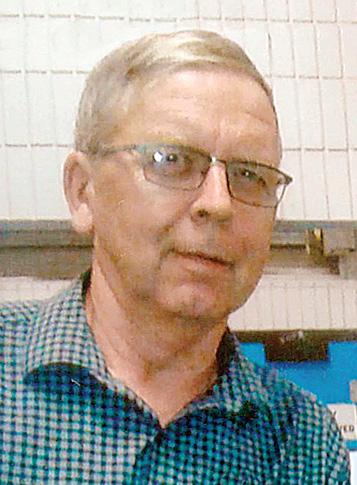
During the 1970s, two small parks were created on Kensington Street. The Kensington Street South Playground only lasted a few years due to the Madison Square expropriation. In 2004, the Kensington street North Children's Playground was renamed Luigi D'Ottavio park in memory of Luigi D'Ottavio. Luigi and Elisabetta and family were long-time residents of the 400 Block of Kensington. After his retirement, Luigi was a crossing guard at both Berry and Ness, and Queen and Portage.
Kensington between Silver an St. Matthews is now totally commercial . I will leave that block for inclusion in a possible future story.
The interesting history of Kensington Street can never be expropriated.
Notes:
1. One of the longest running mistakes in Greater Winnipeg History is the statement that George Sharp in 1957 was the last Mayor to be defeated. It happened several times in the suburbs between 1957 and the 1972 creation of Unicity.
2. The date is taken off the current Bord Aire Community Club Web Site.
Fred Morris is a Grandfather, Sports Fan and Political Activist.
School tax rebates are in the mail, providing most property owners in Manitoba with a cheque equal to 50 per cent of the education portion of their property taxes. At the same time, schools are benefiting from historic increases − $100 million more this year alone. That’s among the highest per student funding level in Canada.

For the third year in four, Manitoba is holding the line of Pharmacare rates.
This will help make life more affordable for seniors on fixed incomes, lower income Manitobans and families.
Learn more about Pharmacare and how it helps cover the cost of prescription drugs at Manitoba.ca/pharmacare
“After 17 years of the NDP trying to shut down development in the north, it is time to bring us back to our position as the best place in the world to make mining investments,” said Premier Heather Stefanson.
“A lot of damage was done to our international reputation in the minerals field during that time,” she added, “but we are fighting our way back. Over the past year and a half, we have gone from 39th to 14th in the 2022 Fraser Institute Report, which is an improvement, but I am not satisfied that we have overcome all the obstacles,” she said.
are ready to seize those opportunities. The mining industry also realizes that environmental mitigation is part of the deal and, today, they are including this in the package. Responsibly developing our mineral resources along with our agriculture and manufacturing base just makes sense.”
To facilitate mining exploration and development, Manitoba recently announced a $1.55 million grant to support the Mining Association of Manitoba to market and promote Manitoba’s mining sector to the public as well as domestic and international investors.
Heather StefansonWhile the Premier’s commitment to facilitate mining exploration remains absolutely rock solid, the delays in permit granting have been slow to resolve. She is unsatisfied that it takes 25 percent of applicants two years or more to get permits for licenses or notices of work so they can conduct exploration activities. Despite this, she so impressed the mining sector when she met with them that a full 75 percent of respondents remain confident that the Premier will solve the problem. To expedite this, she has appointed a competent and determined minister, Jeff Wharton, who takes seriously his mandate to improve the situation.
Why is this so important? “We want to create hope and opportunity for everyone,” she said. “Mining and resource development are win-wins for all Manitobans, and especially for the Indigenous people in the north who have been kept isolated and away from opportunity for far too long.
“Industry gets it that the world has changed. They now come to the table with plans that benefit Indigenous communities,” she said. “They see the advantages in having an active and eager local workforce. And Indigenous communities
“Manitoba is in a unique position to capitalize on the current interest in critical minerals such as lithium,” said the Premier. “We need to inform our population about just how much this means to their future. For example, how many people know that Manitoba has the world’s largest cesium mine in the Tanco Mine at Bernic Lake?” Cesium is one of the critical components of today’s battery manufacturing business.
Bernic Lake is just two hours northeast of Winnipeg, 45 minutes from Lac du Bonnet. The Tanco mine has been in operation since 1929 and was previously of interest because of its tantalum, used for, among other things, electrolytic capacitors for miniaturized electrical circuits and vacuum furnace parts. Tantalum often occurs in conjunction with cesium and lithium. The Manitoba site has 82 percent of the world’s known deposit of pollucite, which contains high concentrations (about 20 percent by weight) of cesium.
Bernic Lake is not the only deposit of lithium-bearing pegmatite in Manitoba. So far, we know that resources also occur at Red Sucker Lake, Gods Lake, Cross Lake, Red Cross Lake, McLaughlin Lake, and at Wekusko Lake. Many of these locations are on Indigenous lands and many in the eastern part of the province, from the southeast corner to the Hudson Bay Basin.

“Resource development opens up exciting potential for Indigenous people of the province to create local economies that will allow them to develop and progress,” she said. “It also means more jobs and higher wages for all Manitobans.”
Much of the mineral development is in the northern half of the province so ensuring we have reliable transportation to Hudson Bay is also important. “Having access to the Bay will allow us to ship
products from Manitoba to the world without going through crowded, expensive East and West coast ports.”
The Premier’s vision for Manitoba is high-level and unafraid. She aims to support our legacy industries such as agriculture, manufacturing, and transportation with emerging opportunities, such as mining, wherever they occur. She notes you can’t have progressive programs without a strong economy to support them.

“We want to get to Number One!” Minister Jeff Wharton stated before he is even asked a question about the state of mining in Manitoba.
Having just had the mining file added to his portfolio four months ago, you’d think he would still be stumbling, but instead, he has bounded ahead, working to deal with the permits issue and demanding faster action on the file from his department and others. He is proud of the improvements, but he is also determined to reach the ultimate goal of being the best place to invest in Canada and even the world. He has been dealing with the problems systematically.
One of the issues was understaffing, he points out, and that has been remedied with a beefed-up department with 19 newcomers that are focused on resource development, investment, and trade which are all part of his responsibility. They have also brought back as an advisor, Ed Heubert, one of Canada’s foremost experts in mineral resource development. Ed knows the portfolio from all sides and, what’s more, he knows the players.
Early on, Jeff recognized one of the major flaws in the way the file was being handled. “We had this silo way of dealing with permits and that was causing major
delays in getting things done,” he says.
“Each department was working in isolation. What was important to resource development may have been seen as contrary to what another department felt was their priority mandate.” He has been working to consolidate decision-making, taking an all-government, umbrella approach to the management of natural resources.
“The other thing has been the way government departments have engaged in the past with Indigenous people and the development of resources on their land. The communities need to be able to make their own decisions and, to do that, they need solid information, and they need it presented in a way that makes sense to them,” he says.
The minister pointed to one instance where a permit was in the works for considerably more than two years. “In this case” he said, “there were some ownership issues, but there were also dysfunctional negotiations with the local Indigenous group.”
He adds, “Industry must realize that this is a new day. They have to find a balance between their interests and those of the local people. This is part of reconciliation, and we see it as part of our role as government to bring industry and Indig-
enous people together so they can arrive at a fair and negotiated agreement that works for both sides.”
The recent announcement of $1.55 million to Mining Association of Manitoba Inc. and the Communities Economic Development Fund is focused in part on economic reconciliation with First Nations.
But more, “The emerging green economy is changing regulatory environments,” he said. “The global demand for critical minerals presents Manitoba with enormous opportunities. Manitoba is perfectly positioned to seize those opportunities due to our clean, renewable energy, and the minerals needed to support the new demand.
“We also recognize the importance of doing this in partnership with our Indigenous populations. That means revenue sharing and shared decision making.
“I spent my pre-political life as a successful businessperson,” he said. “I know what it means to have a stake in the outcome.” His attitude is critical to creating fair outcomes to both industrial and Indigenous participants in resource development.
Finally, he says, his goal is to get the message out to the world. “We are determined to make it clear that Manitoba is
open for business.” He comments that the best thing that has happened to Manitoba mining investment prospects over the past few years was the attendance at the PDAC conference in Toronto last spring by the Premier and Minister Cliff Cullen. The industry was inspired by her speech and the open discussions the minister held with the players the following day.
There was an immediate response from industry which, since then, continues to put a lot of faith in Manitoba’s determination to facilitate resource development growth.
The $1.55 million was awarded to get the word out about Manitoba’s lithium resource and the role it will play in the green economy. They are also focusing on employment training and looking at further ways to improve development-friendly provincial standards and guidelines.
In the meantime, the minister says, he has an open door. If you as a miner or prospector have a question, call him, and he or his righthand man will get back to you. What a refreshing attitude in this day of one-way digital communication!
As we went to press, a last-minute call let us know that the company example in the story above got a notice, dated May 31, 2023, that his permit was approved! Now that’s what I call “getting it done!”
Continued from page 1 activities a service that they cannot get anywhere else in Canada, and perhaps North America – location, affordability, a keen workforce, a tremendous amount of existing government infrastructure, and the full support of the Province of Manitoba,” says Ken Mariash, owner of B.C.based Focus Equities.
“The rail park is attracting businesses from around the world to be located in our sustainable and innovative transportation hub.”
Manitoba has a diverse economy and a keen, affordable workforce, Mariash adds. The rail park is expected to create thousands of direct and indirect jobs.
When the entire rail park is complete in 10 to 15 years, the economic spin-off could be as high as $1 billion, he notes. Phase 1 will consist of nine or 10 lots ranging from 10 to 50 acres. The company is set to announce its first tenants soon.
Uniquely positioned to leverage Manitoba’s geographical advantage at the centre of Canada, the rail park is situated between major North American trade corridors with the Trans-Canada Highway and Winnipeg Richardson International Airport each just minutes away. It also has access to three Class 1 railways, with CN and BNSF available through federal inter-switching, and direct access to Canadian Pacific Kansas City (CPKC).
With CP and Kansas City Southern newly merged to create Canadian Pacific Kansas City (CPKC), it becomes the first single-line railway in North America to link Canada, the U.S. and Mexico. It is expected to create synergies that will further enhance North America’s transportation
In a healthy organization, there is a process for developing board leadership that provides for an orderly succession plan. People are recruited to join a board and usually start to serve on a sub-committee in addition to their board duties starting in the first year. The board members learn more about the mission and work of the organization, and they start contributing in meetings and in projects. After the first year or two on the board, depending on the needs of the organization, a board member may be asked to join the executive committee.
It is important to identify several candidates who could serve as board chair and bring them onto the executive early enough to be able to serve on the executive and as the board chair within the term limits for board membership as outlined in the organization’s by-laws. The lengths of terms of office should be identified in the by-laws as well. Some organizations are happy to keep a board chair as long as the person is willing to serve in that capacity. In some cases that is a reason-
network and enable businesses to reach new markets.
Coupled with the rail park’s strategic location and efficient connectivity, businesses will be able to transport goods more efficiently and cost-effectively.
“Ken Mariash’s vision for the rail park is to create a world-class rail hub that will further transform the transportation and logistics landscape of Canada,” says Aimee Goyer, CentrePort’s Executive Director, Marketing and Communications.
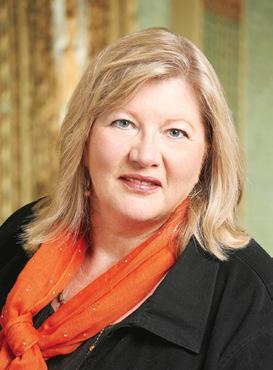
able idea, but most of the time, it is best for a board chair to serve for a maximum term of four or five years. Serving in this capacity is a big commitment of time and energy, and most people are not comfortable with an open- ended responsibility.
It is also healthy for an organization to benefit from the ideas and approaches of a series of committed, intelligent, connected and skilled board chairs. Each person plays a role in the history of the organization in its community.
Trudy Schroeder Random NotesFor the good people who agree to take on the board chair positions in our communities, there is a debt of thanks that is owed for their commitment to the quality of life of others in their community. There are many responsibilities, but also many opportunities and experiential benefits for those who are willing to take on these roles. There are some key tasks that the board chair must take on and pledge to do well.
The first is to work well with the senior paid executive in the organization. The relationship between the board chair and the CEO or executive director is extreme-
“The federal government’s recently announced $18 million toward the construction of the CentrePort Canada Rail Park is a significant financial endorsement,” Goyer says.
“It signifies just how substantial the project is in terms of its ability to connect and grow industry in Manitoba and Canada.”
Businesses will have the freedom to ship goods with the rail company of their choice to deep-water ports on the east and west coasts of Canada, making it an ideal gateway for international trade. The efficient transportation of goods reduces costs and increases competitiveness, enabling businesses to reach new markets and customers.
Mariash has a proven track record of developing successful projects in the real estate and logistics sectors.
He has been involved in several major projects in Canada and the U.S., including build-to-suit experience with Fortune 500 companies such as IKEA, Walmart, Loblaws, and industrial companies such as Worley Parsons, Kuehne + Nagel, and Canadian Freightways.
Mariash’s commitment to sustainability and innovation is evident in the CentrePort Canada Rail Park’s design, which incorporates energy-efficient technologies, green spaces and multi-modal transportation options.
Focus’s goal is to create a hub to attract businesses from around the world, driving economic growth, job creation and innovation in Manitoba and beyond.
For more information on CentrePort Canada Rail Park, visit: https://centreportcanada.ca/developmentadvantages/#rail-park

leadership role within the organization; however, with the investment of time and goodwill that can work out well too.
ly important. While the CEO is hired by and reports to the board, there must be a productive and trusting relationship between the CEO and the board chair for the organization to work most effectively. Sometimes this relationship is straight forward and simple to manage, and other times there can be a period of adjustment and awkwardness in the relationship that can take awhile to settle into a happy and dependable partnership. Both individuals should remember that a failure to establish a good working relationship is a failure on the part of both individuals. The board chair and the CEO must work diligently to establish trust and confidence in each other. It is well worth the effort to do so. This becomes even more complicated in arts organizations that often have a dual
Organizations need stable professional leadership and a stable, well-lead board of directors. It is important for these two individuals to make time in their busy lives to speak with each other regularly, to update each other on organizational business and opportunities. At a minimum, it is important for the CEO and board chair to plan and discuss the executive and board meeting agendas and priority items and decisions before each meeting. I have found it helpful to have an in person or telephone meeting every week. Regular communication helps prevent surprises and miscommunications that could cause many complications.
A board chair has a responsibility for the health of the board, which is a very important role, but equally important is that key responsibility of developing an excellent working relationship with the CEO. The bonus involved in this process is a healthy and well functioning organization that is well positioned to achieve its mission, and if you work hard and accomplish great things, it is highly likely you will also make a good friend.
Trudy Schroeder provides project planning and management services to the community through Arts and Heritage Solutions.
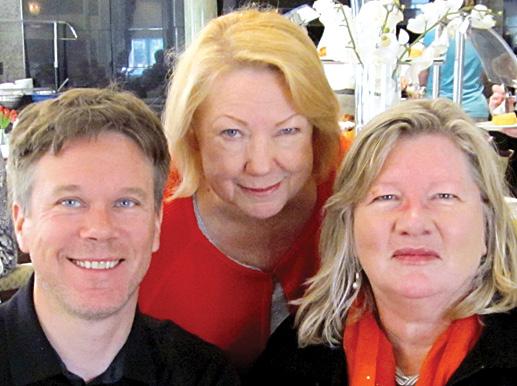
I could not help showering the Prairies with praise while on a quick weekend trip to the Washington D.C. area for a wedding
Family joined me and my wife on visits to the U.S. Botanical Garden and the Smithsonian’s National Museum of the American Indian. These are incredible institutions much like the Canadian Museum for Human Rights and Assiniboine Park Conservancy.

The coastal folks were curious about what compares in our part of the continent. I quickly lauded the Winnipeg locations I’ve come to cherish and appreciate.
The parallels between the displays at CMHR and the Smithsonian were obviousmoving, heartbreaking and uplifting. Although I admire Canada for its more sincere effort at reconciliation, I felt a new sense of pride in my own country. The history and ongoing dedication to culture of Indigenous peoples in what
is now the U.S. gave me new perspectives and hope that we can follow Canada’s lead and do better.
The parallels between the flora at APC and USBG were intoxicating. Rich displays of life from climates across the globe tickled all the senses. From damp to dry, artistic and agricultural - each room served as a reminder of the great fortune humans share as inhabitants of the green planet.
Tim Chapman
The hustle of the crowds slowed in both D.C. locations as history and nature have the power to calm us to contemplative states. Although my heart is truly rooted in the openness of the prairies and quiet of Turtle Mountain, I stopped to soak in the many languages and accents seldom heard in rural life.
Perhaps I can keep these fresh memories as new life and new visitors begin to explore the International Peace Garden this summer. We truly are more connected
than we tend to acknowledge when daily toils obscure the peace within us. And the peace that can bind us.
Summer, much like the holiday season, can quickly be filled with have-to-dos. It does not need to. We have museums, gardens, each other. These wonderful places for gathering are calling us to better understand all living things past and present.
If you are unsure about the state of the world and how you fit, look no further. It is in these cherished spaces of learning that we can feel the wonder and beauty of being small. Small in the humbling sense of a blade of grass or an artifact from centuries ago. Each of these plays a role in the transfer of energy that never ends.
Tim Chapman is the CEO at the International Peace Garden on the border of Manitoba and North Dakota. The Garden is open year-round and grooming ski trails for the first time this winter. Rent one of our cabins and enjoy a winter weekend that only the forest of the Turtle Mountains can provide.
Continued from page 1
teeth into. The usual spots to find one is on your scalp, armpits or groin area. The trick is to get rid of them as soon as you find one. They need to feed for a day or two before they can transmit an infection. They can carry two or three different possible infections at one time. The one infection we hear the most about is Lyme disease.
Lyme disease is the most common disease spread by ticks all around the Northern Hemisphere. The disease was first diagnosed in 1975 in the town of Lyme Connecticut, hence the name.
People have used a number of ways to remove ticks. Some of them are gasoline, nail polish, petroleum jelly,
rubbing alcohol and salt. The thought behind these methods is to ostensibly suffocate the tick. As ticks can survive long periods without air, don’t bother trying any of these. They don’t work.
When you discover a tick don’t panic. Don’t attempt to remove it using your fingers to pull it off. Use a good pair of tweezers. Place the tweezers as close to the skin as possible on both sides of the tick and then gently pull straight up. After the tick has been removed wash the area where the tick was as well as your hands with soap and water.
Symptoms of Lyme disease usually include fever, a headache, fatigue and muscle aches. Another sign is
often a circular rash around the infected area which can appear anywhere from three days to a month after the bite. It’s good to be cautious but know the odds of getting Lyme disease after being bitten are less than three percent. Just over 3,000 cases of Lyme disease were reported in 2021 with most cases in Ontario and Quebec. Manitoba isn’t far behind.
Lyme disease appears to be trending upwards so when you plan to go walking or hiking in a wooded area or where ticks are known to be around, take proper precautions. Tuck your jeans into your socks or boots, use insect repellent on both your legs and feet. After your hike, check your body, especially the areas I have already mentioned. Don’t forget to check your clothes as well.
If you develop a rash or fever within several weeks of removing a tick, see your doctor. Tell your healthcare provider about your recent tick, when the bite occurred,
Part 4 of a series
Insulin is the hormone produced by the pancreas that moves blood glucose from the food we eat into our tissues and organs; it is needed for energy and a multitude of important functions. Insulin resistance (IR) is a physiological state where our cells become resistant to the effects of insulin and is an underlying cause of many serious health conditions.
The goal of this series of articles is to show how we can restore insulin sensitivity to our cells and help reverse IR. When our cells are more sensitive to the effects of insulin, the many health problems associated with IR can be reversed, bringing you the greatest potential for living a long, disease-free life.
While most people associate high blood glucose and high insulin levels with type 2 diabetes, before reaching confirmation of that diagnosis, a host of other problems may develop which should be a red flag that it’s time to correct the underlying cause of these problems by lowering blood glucose and insulin levels through lifestyle, diet, and supplements. Just about every health problem can be improved by correcting this one overarching cause.
While there are a number of dietary changes and lifestyle modifications to consider, in this installment I’ll outline the role sweeteners play, as well as some of the other substances we consume, and how they all can either contribute to insulin resistance or help correct it by improving insulin sensitivity. If you haven’t read the earlier parts, I recommend you go to avivahealth.com/zassman, as they contain important information and additional context.
Fructose
Sugar, high fructose corn syrup, honey, maple syrup, and agave all work to stimulate insulin production, but it’s the fructose component in these sweeteners that increases IR the most. Pure fructose (often used as crystalline fructose in health products), sugar (half glucose, half fructose), and high fructose corn syrup, all increase IR. Another problem is that these sweeteners also increase oxidative stress which can lead to cell damage and contribute to serious health conditions.
Fruit is naturally high in fructose, but if you consume the whole fruit, the fibre content lowers the insulin-stimulating effects of the fructose. But if you juice your fruit, you’re removing the fibre component and consuming pure fructose, so I do not recommend consuming fruit juices.
Natural Sweeteners
Natural alternatives that appear to be safer (that do not result in insulin production) include stevia (Reb M is the form that tastes most like sugar, without the strong aftertaste), yacon syrup, monk fruit, and allulose. Allulose is a monosaccharide that naturally occurs in foods including figs, raisins, maple syrup, and jackfruit. Check to ensure that monk fruit or stevia products are not blended with xylitol or erythritol.

Yacon syrup is interesting as it is rich in prebiotics, soluble fibre (also called FOS or fructooligosaccharides) that helps the body to produce bifidobacteria and lactobacillus. These probiotics can help reduce constipation and improve immune response. In addition, FOS fermentation in the colon can produce short-chain fatty acids (associated with lower rates of colon cancer) by suppressing inflammation.
Sugar Alcohols
Until recently, I had recommended the use of xylitol and erythritol as sugar substitutes. These are sugar alcohols that taste almost identical to sugar, but they do not cause the insulin response that sugar does. New research from the Cleveland Clinic has found a strong correlation between erythritol and an increased risk of heart attack and stroke, so I no longer recommend any sweetener with erythritol. Many monk fruit sweeteners are predominantly erythritol, so read the label carefully. Xylitol can be very effective as an ingredient in toothpastes, nasal sprays, and when used with salt in a neti pot for reducing bacteria in the nasal mucous membranes. However, I have found that it can disrupt gut bacteria when ingested, and some people who are sensitive to xylitol may experience diarrhea and irritable bowel syndrome.
Artificial Sweeteners
Many people believe that artificial sweeteners including sucralose, acesulfame potassium (Ace-K), cyclamate, saccharin, and aspartame are healthier alternatives to sugar, but a study found that those who drink artificially sweetened (diet) soda had a 67% higher risk of developing type 2 diabetes. Resistant Starch
Resistant starches have a variety of health benefits including improving insulin sensitivity. The starch in foods like rice and potatoes that normally boosts blood glucose levels becomes resistant to digestion if it’s allowed to cool and then reheated. Resistant starch is a dietary fibre that alters the gut microbiota (the “good” bacteria in our gut), acting as a prebiotic to produce beneficial microbes including short-chain fatty acids, and butyrate. These microbes have a wide variety of benefits including lowering blood sugar and potentially reducing the risk of cancer. An easy way to add resistant starch to your diet is by consuming potato starch, a fine powder that can be added to water or smoothies.
Salt is so often associated with hypertension that for decades medical professionals have been recommending we eat less salt. But studies have found that for those that have hypertension, restricting salt has no effect (blood pressure doesn’t drop). Insufficient salt is however highly associated with IR. In a recent study of over 150 men, those who restricted salt intake became more insulin resistant. When we restrict salt, our kidneys produce more aldosterone, a hormone that helps the body retain urinary salt (which is why blood pressure rises), but IR increases in the process.
Watch for the black-legged tick as they can transmit the virus that causes Lyme disease through their bites.

and where you likely acquired the tick. A little tick talk from time to time doesn’t hurt … but a little tick could. Have a safe summer.
Jim was a writer-broadcaster, producer and presenter on television and radio for 40 years. He is also a podcast host on Lifestyles 55 Digital Radio. Find Radio Redux and Mid-Century Memories at www.whatsupwinnipeg.ca

Tobacco Cigarette smoke exposure increases the risk of many chronic diseases, especially cardiovascular and respiratory. Dr. Gerald Reaven identified a relationship between smoking and IR over 20 years ago, and many studies have confirmed his research. In addition, second-hand smoke can produce ceramides, a class of lipid molecules that may contribute to smoke-induced IR. Nicotine (the primary addictive component in tobacco) causes our fat cells to be insulin resistant, and nicotine can also enter the body through patches and vaping.
Food Additives
Monosodium glutamate is a wellknown (and controversial) flavour enhancer. One of the earliest methods used to make lab animals obese, MSG boosts insulin levels in response to glucose. Even small additive doses of MSG may contribute to the risk of developing IR and metabolic disorders. While there are traces of MSG that occur in some fruits and vegetables, the levels found naturally are quite low. Sugar, high fructose corn syrup, cornstarch, and maltodextrin (also from corn) are also routinely added to processed foods, so read labels carefully, as they can all contribute to IR.
Intermittent fasting and time-restricted eating are powerful tools that can lower IR, but it’s critical that you don’t cross the line and go into a state of starvation. Consuming insufficient food for long periods (as with eating disorders like anorexia nervosa or bulimia nervosa) can result in loss of lean muscle tissue, bone loss, organ damage, heart disease, diabetes, and cognitive problems.
With aerobic exercise, as your body adapts and you increase intensity, your muscles will start using fat rather than glucose for energy. I recommend researching high-intensity interval training (HIIT). You’ll learn how intermittent sprints, or simply walking, cycling, or rowing as fast as you can for short bursts of time can produce the same results as longer, lower-intensity exercise. You can use the same approach with resistance exercise, where you push yourself to failure for each set. It’s more work, but the results are worth it.
In the coming months, I’ll outline some of the important nutritional supplements that can help restore insulin sensitivity and reverse IR. When combined with the right diet and lifestyle changes, you’ll position yourself to feel better throughout the day and help prevent disease.
Nathan Zassman is the owner and president of Aviva Natural Health Solutions.

On any given day our doctors and nurses at HSC Children’s Hospital, tell us that upwards of 60% of kids visiting clinics, staying in hospital long-term, and receiving treatment are Indigenous. Children from First Nation, Métis and Inuit communities are three to five times more likely to be affected by many diseases/conditions.
This includes kids like Janessa, from the northern community of Pukatawagan, who needed a kidney transplant at age 12 when she reached stage four kidney disease. The surgery was a success, and now Janessa is thriving and enjoying her favourite activities like getting outside and dancing.

Research informs us that diseases such as diabetes, circulatory (heart) and respiratory diseases (Pediatric TB), and some cancers are increasing in Indigenous children to a greater extent than non-Indigenous children. These diseases require long-term care with specialist teams, which often means visiting the hospital for years.
alizing reconciliation and will be funded thanks to donors like you.
Many donors feel compelled to contribute to support children from First Nation, Métis, and Inuit communities. So do organizations such as CAA Manitoba, a local organization that is aiming to make a difference for the community it serves.
These donors are so important because they are helping set this much needed project in motion.

On December 20, 2022, the eve of Winter Solstice, a ceremonial gathering was held with Elders, Knowledge Keepers, and other Indigenous community members to build a framework for the development of the Indigenous Healing Space.
Stefano Grande Healthy LivingThat’s why the Children’s Hospital Foundation of Manitoba is committed to #ReconciliACTION through projects that provide culturally safe care, like the Indigenous Community Healing Space.
The Healing Space will be created for families far from their support system. It will have Indigenous design elements, a library space with Indigenous children’s books, a place for Indigenous Elders, healers and Knowledge Keepers to support families in care and much more.
It’s a project led and imagined by Indigenous women in the hospital’s journey towards the commitment of re-

It’s been 655 days since I last had a drink, not that I’m keeping track, and today I want a drink or maybe more.
It is the end of the work week and it’s the start of the long weekend. The weather is great. I have my favorite old country music on and the back deck is calling. And yes, I want a drink or maybe more, and I might have a drink or maybe more. But not today.
If good things come to those that wait, an argument could be made that procrastination is a virtue. If that is true, that would be a virtue I was never in possession of – actually, I am not aware of any virtues I am in possession of. I have long thought that sooner is always better than later. I can remember trying to be at the front when we had to line up for vaccinations back in elementary school. I knew I would have to get the needle and it would be just as painful, regardless of whether I was the first or
The Winter Solstice is traditionally a time to reflect on the past, rest and renew strength, and a time to hope, dream and set goals for future. In that spirit, these community members gathered, took time to reflect, think, share, and plan the groundwork for moving forward on the Indigenous Healing Space with intention and consideration.
As a result of these discussions, two broader engagement sessions are being planned in 2023, to include:
• Children and families who have needed care and services at HSC Children’s
• Staff and leadership of the hospital
• Representatives of Indigenous communities and organizations
This consultation process is essential to the creation and future impact of the Indigenous Healing Space. It demonstrates the value of voices and the spirit of com-
the last in line. The longer a person stood in line, the longer a person had to dread the inevitable. If something was going to happen, why put it off? Don’t wait, do it today.
It’s been 655 days since I last had a drink, not that I’m keeping track, and today I want a drink or maybe more. “Don't put off until tomorrow what you can do today.” Those are good words to live by, and I usually do. But not today.
It’s been 655 days since I last had a drink, not that I’m keeping track, and today I want to have a debate with myself. The problem with having a debate with yourself is that your side always wins and your
munity that are the heart of the space and the source of its ability to help in healing. This vital work is possible, because of donors like you.
Children’s Hospital Foundation of Manitoba is privileged to gather, work, and care for each other on Treaty 1 territory, the ancestral homelands of the Anishinaabeg, Ininiwak, Anishiniwak, Dakota Oyate and Denesuline peoples, and the birthplace and homeland of the Métis Nation. Inuit from ancestral northern territories also make their home here.
As a champion of children’s health and wellbeing, we acknowledge the harms of the past, and promise to honour the children of yesterday, today and tomorrow, as we walk together with First Nations, Métis and Inuit on a path of reconciliation and healing.
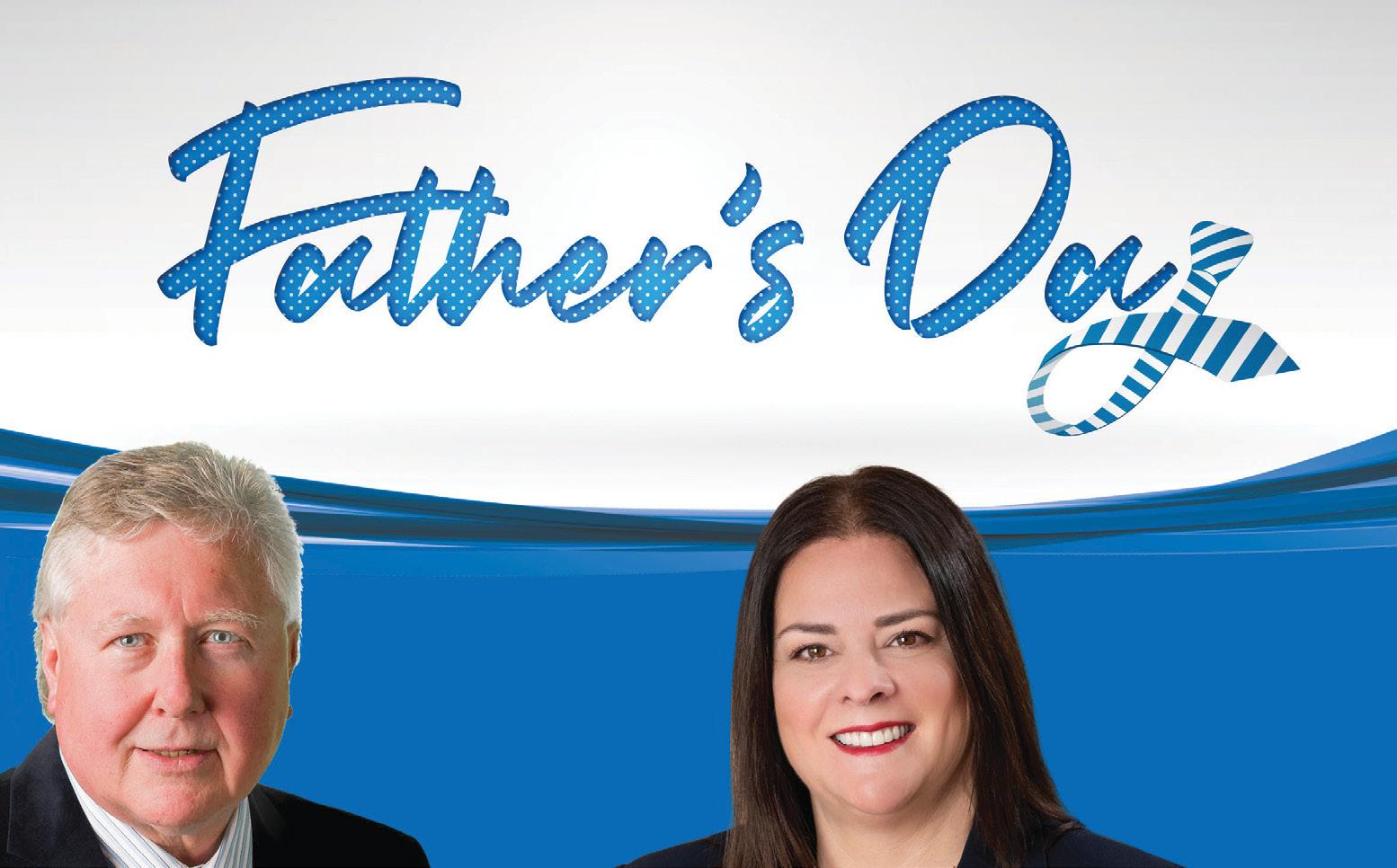
Stefano Grande is the president and CEO of Children’s Hospital Foundation of Manitoba.


side always loses. “Be it resolved that if you can successfully limit your alcohol intake to zero, you can successfully limit your alcohol intake to a drink (or maybe more) today”. It’s been a while since I’ve had this debate and even though I lost (and won) the last debate, I’m thinking that this time I can win and not lose. I know both sides of the question and can argue, convincingly, both for and against the question, and today I know which side I want to win. So, I’ll entertain the question and enter the debate. But not today.
It’s been 655 days since I last had a drink, not that I’m keeping track, and today I am considering some advice I was given. A month or so after I stopped drinking, someone told me that I was going to fail. You’re too confident, Rick. Nobody ever succeeds the first time. Everybody falls down. Since
it’s going to happen, it’s best to get it over with. The longer you go before you fail, the worse you’ll feel. My advice is that you stop at the liquor store on the way home and buy a bottle. (Someone actually said that to me!) I didn’t listen to him then, but his words have stayed with me. He should know what he was talking about. After all, he had been trying to quit for years. In a way, his advice made sense. So, I might just take that advice. But not today. It’s been 655 days since I last had a drink, and maybe I am keeping track. And today I want a drink or maybe more. It is still the end of the work week and it’s still the start of the long weekend, the weather is still great, I still have my favorite old country music on and the back deck is still calling. And yes, I still want a drink or maybe more, and I might still have a drink or maybe more. But still, not today.
For close to 30 years, André Lewis, Artistic Director & CEO, has held a bold artistic vision and been the driving force behind innovative works and classical recreations at Canada’s Royal Winnipeg Ballet. At the same time, he has maintained a distinctly Canadian identity in the repertoire shared with generations of dance enthusiasts in Manitoba, across the country and around the globe. And the 2023-24 line-up is no different. The upcoming season has been designed to honour Lewis’ legacy, while presenting inspiring works to audiences of all ages.

Lewis’ desire to dedicate a lifetime to teaching, creating and performing exceptional dance is not something he takes for granted. Lewis sums it up best:” It is an honour and a privilege to play a role in an art form that can awaken emotions and delight the senses – and many times change someone’s life journey. It is my passion to do what I do – it does not feel like work at all – it is living the dream and sharing the dream with all of you!”
Centennial Concert Hall
Wednesday, September 27, 2023 - Sunday, October 1, 2023
A new acquisition that showcases everything that André Lewis and the RWB does best – bold character acting, creative interpretations of familiar stories, and larger-than-life staging and costumes.
Experience the Canadian première of this mature twist on the original Brothers’ Grimm story of Snow White. Step into an enchanted narrative filled with strong, contemporary movement and characters magnificently costumed by Jean Paul Gauthier. The narcissistic, seductive Queen seeks power in her beauty and will stop at nothing to hold on to that influence – even at the expense of her ingenue daughter-in-law Snow White. Set to Gustav Mahler’s Symphony No. 1, Snow White’s journey through the stages of her life mirrors the music’s evolution from optimism to depravity and finally to triumph.
*Rated PG-13 for sexual content
Centennial Concert Hall
Thursday, December 21 - Saturday, December 30, 2023
This gem in the Lewis legacy leaves the country with a holiday tradition inspired by Canada. A uniquely Canadian spin on the beloved holiday story makes our Nutcracker a nostalgic treasure that charms audiences of all ages, year after year. Young Clara’s dreams come to life in spectacular fashion as her nutcracker transforms into a gallant soldier to defend her from the army of the Mouse King, with majestic Mounties battling the mischievous Mice. The duo journey through a shimmering winter wonderland filled with dancing snowflakes and adorable polar bears to the court of the Sugar Plum Fairy. Tchaikovsky’s iconic score sets the stage for marvelous turn-of-the-century costumes and sets. Don’t miss the hijinks of fan-favourite Filbert the Bear during the family party!
ROMEO & JULIET
Centennial Concert Hall
Wednesday, February 14 to Sunday, February 18, 2024
Choreographer Rudi van Dantzig worked closely to pass the legacy of this work to Lewis, who has since become an in-demand stager for the production the
world over.
Fall in love all over again with Shakespeare’s timeless romantic tragedy that remains a masterclass in balletic storytelling. Star-crossed lovers Romeo and Juliet defy the odds – and their feuding families – in pursuit of their happy ending while navigating the politics and intrigue of Renaissance Italy. Their love becomes their undoing as fate conspires to keep them apart. From innocence to tragedy to redemption, these larger-thanlife characters demand remarkable acting that make this production one of the RWB’s crowning achievements. The splendour of sixteenth-century Verona unfolds in Toer van Schayk’s lush sets and costumes, complementing Rudi van Dantzig’s inventive choreography and sword fighting.
With World Premiere (Cameron Fraser-Monroe)
Centennial Concert Hall
Wednesday, April 24 to Sunday, April 28, 2024
This work is a nod to André Lewis’ dedication to working with international and Canadian choreographers. Since he introduced it into the repertoire in 2002, Carmina Burana has become one of the RWB’s most requested performances.
A feast for the senses that pairs sensual, powerful choreography with Carl Off’s masterpiece Carmina Burana symphony. Unbridled passion and highly physical technique express raw emotion that transcends the need for a story. Choreographer Mauricio Wainrot’s artfully staged vignettes capture the spirit of the titular score’s five movements, oscillating between the erratic, romantic, and lustful as they celebrate community and the joys of life.
Audiences will also be treated to an extraordinary piece from the Royal Winnipeg Ballet’s new Choreographer in Residence, Cameron Fraser-Monroe, making

Senaka Samarasinghe
Mother’s Day: Health Education: High Blood Pressure in Adults
Sri Lankan Seniors Manitoba (SLSM) decided to conduct health education session on the above heading. This was delivered by Dr. Rivi Warnakulasooriya MD, MSc, CCFP who works currently as a physician
in Province of Manitoba. His wife, Dr. (Ms.) Renuka Warnakulasooriya, helped Rivi’s demonstration.
As the topic is applicable among Seniors and as both of them are not strangers for SLSM members, the question-and-answer period was extended more than the scheduled time allocated.
At the beginning, Indra Ariyaratne, President SLSM, introduced two invitees to the members. As Mother’s Day falls on May 14th, 2023 mothers were offered a gift parcel as a mark of respect.
its world premiere on the mainstage – and showcasing a bright future for the RWB as we continue to innovate through dance.
Manitoba Theatre for Young People

Thursday, May 23, 2024 to Sunday, May 26, 2024
Up and coming dancers in the RWB Professional Division present excerpts of beloved favourites and new works that will captivate audiences. Months of intensive training culminate in a show-stopping performance that shines a spotlight on the determination and heart these young artists bring to the art of ballet.
Featuring Four Last Songs
RWB Founders’ Studio
Wednesday, June 5, 2024 – Friday, June 7, 2024
The stars of tomorrow deliver exhilarating performances highlighting the versatility of the Anna McCowan-Johnson Aspirants. Immerse yourself in an intimate and engaging series of dances delighting fans of classical and contemporary dance alike. From timeless classics to daring new creations, anchored by the emotional journey of Rudi van Dantzig’s Four Last Songs, On the Edge will celebrate the RWB’s artistic legacy and continued innovation.
This is a glorious season that will be talked about and remembered for years to come…check out rwb.org for more information about renewing your subscription or buying another one as a gift for someone special in your life who may appreciate the arts too! You can also call 204.956.0183 to secure your favourite seats!
We hope you will share in our celebration of André Lewis and the new season, where you can experience living the dream moments in your own life journey through the art of dance!

Continued
ers did not write of civil rights or political protest. They wrote about this country and their love for their homeland as well as the nature of relationships, love, and loss. And they all did so with a distinctive poetic gift.
I remember the first time I heard Lightfoot’s epic masterpiece “The Canadian Railroad Trilogy” in 1967, I had to find a dictionary to look up what “verdant” meant. It was the perfect descriptor of early Canada and Lightfoot instinctively knew that.
peared in the form of a well-worn, frayed lawn chair, the kind my parents’ generation used, consisting of coloured plastic lattices woven between an aluminum frame, on the front door stoop. I could picture Gordon enjoying the sunshine pondering life or working through some new lyric ideas, while watching the Porsches and BMWs go by.
John Einarson Local Music Spotlight
Although composed two years apart, Ian Tyson’s “Four Strong Winds” and Lightfoot’s “Early Morning Rain” both address the post-modern plight of urban alienation and the desire to get back to a simpler life. Whereas Ian’s lament is for a lost love out west, Gordon’s lyrics reflect the loneliness of the working man relocated from a rural environment and his loved ones and longing to return. The changes in technology are also reflected in the two songs: Ian writes of sending down “the fare” implying a train ticket, and the imagery of the railroad opening up the west a century earlier. Gordon’s character watches as the plane he should be on takes off in the dampness of an early morning. “You can’t jump a jet plane like you can a freight train” is perhaps one of the most evocative lines in Canadian songwriting and says much about the changing nature of our post-war, urban society and the sense of dislocation that many often felt.
For my book Four Strong Winds: Ian & Sylvia, I had the distinct pleasure and honour of spending an evening with Gordon Lightfoot at his home in Toronto. He was most gracious in his invitation to me and most welcoming to me in his home. It was an evening indelibly im-
printed in my memory forever.
Lightfoot lived in the toney neighbourhood called The Bridal Path. The Bridal Path is the home of the nouveau riche with monolithic modern angular stone houses, the bigger the better to show off one’s recent wealth and status. His ostentatious-looking mansion, with semi-circular driveway, reminded me of The Clampetts’ Beverly Hills mansion on The Beverly Hillbillies. But as I made my way up the driveway, a rustic down-home charm ap-
I rang the doorbell and was greeted by the man himself. If Ian & Sylvia, Burton Cummings, Randy Bachman, Anne Murray, and Neil Young are Canadian music royalty, Gordon Lightfoot is the grand poohbah of the lot, the sovereign. He is a living legend. There he stood, slightly smaller than I had imagined, and weathered in appearance. He welcomed me into his home and led me to the kitchen. ‘Funky chic’ is an apt descriptor for his furnishings. A beat-up old sofa rested against a wall in the spacious, marble-floored foyer. In the kitchen, several of the chairs revealed stuffing coming out. Gordon offered me a cup of coffee in a chipped cup. It was like ‘single guy living’ in a mansion.
During our interview in his music room, he acknowledged his debt to Ian & Sylvia for kick-starting his career when they recorded “Early Morning Rain” in 1965. The duo even named their album after Lightfoot’s song. But he made sure to point out how Ian Tyson had added an A minor chord where none had been and that chord still irritated him. “She’s away and westward [A minor] bound.”
I knew that fact, but I saw my chance to have Gordon Lightfoot play my all-time favourite song of his just for me. “Where did Ian put that chord?” I asked, knowing full well where it was placed. Gordon then picked up his iconic Gibson 12-string, gave me a withered glance, and performed “Early Morning Rain” for an audience of one, pointing out where he didn’t employ that disputed A minor chord. It was a moment I will never forget.
I left Lightfoot’s home that evening overjoyed and honoured to have spent an evening in his presence. Rest in peace, Gordon Lightfoot, Canada’s poet laureate of song.

Do you long to try something new in the kitchen?
Are, you like me and love all types of food? I mean spice is great if used properly, right? Think about this, Mexican food with its fiery spice, East Indian cuisine that tantalises your palate, Thai curries and pho’s with flavours that heat you inside, and let’s not forget the Greeks with their tarty foods. Put it all together and what do you have?
I read somewhere of a naan used like a taco and stuffed with goodness. This is my take on it. My thoughts are to barbecue a flank steak, which will have been marinated in an abundance of flavours, then placed on nice, heated garlic naan with some salad. Wrap up and delve in.
Ian Leatt FoodiesThe highlight will be how the marinated meat and the intoxicating flavours combine and explode in your mouth; a sensation truly worth waiting for.
Here is what you will need:
For the Marinade
4 tablespoons peanut oil
1 large red onion, diced
6 garlic cloves smashed
1 jalapeno, minced
2 tablespoons ginger peeled and roughly chopped
3 tablespoons dark soy sauce
½ teaspoon red pepper flakes
1 tablespoon worcestershire sauce
¼ cup red wine vinegar
¼ cup finely chopped cilantro
½ teaspoon cloves
½ teaspoon cumin seeds
1 tablespoon freshly ground black pepper
1 teaspoon white pepper
1 teaspoon sugar
1 teaspoon salt
For the Wraps
½ red onion, thinly sliced
1 cup tzatziki sauce
1 medium tomato finely sliced.
4 tablespoons rice vinegar
½ cucumber finely sliced
Some lettuce leaves chopped.
4 pieces grilled garlic naan, for the wrap. Lime wedges, for serving. Cilantro leaves, for garnish
The all important how to
Making the marinade: In a skillet, heat the peanut oil over medium-high heat. Add the onions and cook until soft, 3 to 4 minutes. Add the garlic, jalapeno, and ginger, and cook until fragrant, 2 minutes further. Remove from the heat and transfer to a blender with the remaining marinade ingredients. Blend until smooth, then leave to get completely cold. Once cold pour into a large sealable bag. Clean the steak and prick with a sharp fork this allows the marinade to penetrate the inner parts of the steak. Place the steak inside the bag and rub the marinade all over as best you can. Set in the fridge overnight is best,
this will help it become a very tender flavourful cut of beef.
Place all the salad ingredients into a large serving bowl and toss. Add a little rice vinegar for that added kick. Remove the steak from the fridge and set to one side to warm to room temperature.
Meanwhile, in a small bowl, toss the sliced red onion with lime juice and a little rice vinegar then set aside to pickle somewhat.
Light the grill on high then place the marinated flank steak directly on, flipping only once, until caramelized and medium rare, 9 to 12 minutes. Once cooked remove and leave to rest wrapped in some foil for 5 minutes to allow all the juices to remain trapped.
Place the naan on the grill for a couple of minutes, then remove to serving plates.
When ready, thinly slice against the grain on a bias. Serve the steak on the pieces of grilled naan. Letting your guests add whatever else you have in front of them, pickled red onions, tossed salad, tzatziki. Everything is a flavour kicker.
Ian Leatt is general manager of Pegasus Publications and a trained chef.

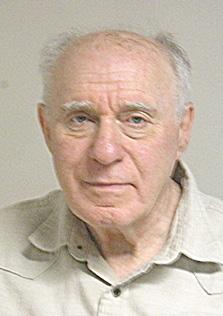
Unlike most other people I have written about in this column over the past few months, my relationship with the late Jerry Shore did not extend back 30 years or more. I only met Jerry one time and that was just a couple of years ago – a few months before he passed away. But where colourful characteristics are concerned, he really stood out.
He had just turned 90 when I met with him in his small apartment downtown surrounded by his cookbooks and his scrapbooks with all the stars of the entertainment world that he worked with for over a career of almost 70 years.
Jerry Shore’s life story is one that most people in the world can only dream about. The lifelong Winnipegger worked with the biggest names in music in all its various genres. He had albums full of signed photos of rock stars, opera greats, leading country and western singers, popular singers, and prominent actors – as well as a politician or two.
The show business tour manager and talent booker’s clients included Harry Belafonte, Nana Mouskouri, the flamboyant pianist Liberace, Richard Tucker and many others.
As with many successful people, Jerry just happened to be in the right place at the right time. The first big break for the kid from River Heights came about while he was at university. He became friendly with of his professors – one James Wilson who had stood for office as a Liberal candidate.
“I was a young Liberal and worked on his campaign,” Shore recalled. “He was on the organizing committee that had been created to form Rainbow Stage. That was in the mid-1950s. I was a member of the Board and/or director of promotions off and on for 20 years.”
It was through Rainbow Stage that Jerry became associated – in the mid-1960s - with Maitland Steinkopf. “Maitland Steinkopf was one of the most amazing people I have ever met,” Shore noted.
Steinkopf, the former MLA and cabinet minister in the Duff Roblin years and all-around community leader, was one of the principal organizers of the Man-Pop Festival, Winnipeg’s first ever major outdoor rock concert, on Saturday, August
29, 1970. The concert at the old stadium featured headliners such as Led Zeppelin, Iron Butterfly, Chilliwack and The Youngbloods.
I was there. Friends bought me a ticket. So was Jerry, as it happens, as one of the organizers. What I remember about it was that the day dawned bright and sunny. But, around noon, the clouds rolled in, and it poured. After a delay of several hours, we were all moved into the old arena where the concert resumed and lasted until after 3:00 A.M.
Jerry recounted how Steinkopf made arrangements to move the concert to the arena and borrow equipment on short notice from all over the city. “Maitland got the fire marshal to ignore the capacity limits at the arena,” Jerry recalled. “It was an amazing concert,” he recalls.
He was also by Steinkopf’s side when the concert hall was being built in the mid-1960s (“he almost single-handedly raised most of the money to build the Concert Hall”) and booked the first act.
That would have been the opera star Richard Tucker. Tucker, Shore recalls, was very protective of his voice. The morning of the concert, the opera star called for Shore to pick him up in the early afternoon.
“Although it was a hot day in May, Tucker came out of the hotel wearing an overcoat, scarf and hat,” Shore recounted. “He wanted me to drop him off at a movie theatre where he spent the next three hours. He didn’t want to have to talk to anybody.”
Shore notes that he became involved in the world of opera after going to Minneapolis to attend a performance of the Metropolitan Opera on tour. “I met some of the people involved and we became friendly,” he recounts. “I arranged to hold auditions in Winnipeg for the Metropolitan Opera. I also arranged a Canadian tour.”
Other opera stars with whom he has worked have been Jan Peerce, Joan Sutherland, Robert Merrill and Pavarotti.
The second act that Shore booked at the Concert Hall was Harry Belafonte. “We became really good friends. He came back for a second show 18 months later. Harry was very meticulous. He had hired a new
Yes, you can get bugs while Geocaching, travelbugs that is, also known as trackables or a TB. A trackable is a physical game piece that is normally supposed to move from Geocache to Geocache. They vary in size and shape and can be very small or very large. My car is a trackable. I purchased a sticker that has a home on my car’s back window and anyone can “discover” it. It doesn’t matter where you see a trackable tag on a vehicle. Take a picture and discover it.
Any Geocacher can own a trackable. They are available from several sources with the most common being Geocaching.com or Landsharkz.com. Once you have one it can be activated in your name (usually your geocaching name), given a description and mission and placed in a geocache that is large enough for it to fit into. The geocaches that are large enough are sometimes called TB hotels and will usually hold several TBs.
Gary Brown GeocachingYou can follow it around online. Make sure that you keep a record of the TB number to do this with. Each TB has its own web page diary that follows its movements. The owner and any finder are able to follow it around. Trackables can be sent out on their own or can be attached to another object with which it will travel around with. This item is known as a “hitchhiker” and is usually somehow related to the name that is given to the trackable. The name is something that the owner will give it.
As you wander around looking for the geocaches you are eventually going to come across a TB. You can do one of two things with it.
You can discover it. The easy way to do this is to record the number that is on it either with a pen and paper or take a photo with your phone. When you return home go online and record it under the “trackables” tab. It is also possible to record it with a phone app while still
manager just before his second Winnipeg appearance. He moved on to Regina after the Winnipeg show. A couple of days later, I get a call from him. He had fired his new manager and wanted me to take over as his tour manager.”
Jerry organized three tours for Belafonte (whom he recalls as quite shy as well as outspoken on race relations). “I was in charge of booking fights and ground transportation, hotels, everything, even paying the staff.”
The highlight of his time with Belafonte was his tour of Cuba. “Harry was the first American artist to visit Castro’s Cuba,” Jerry recalled. “CBC was doing a special on Harry Belafonte and his roots. There were 30 of us in the group. We get off the plane and there are men in uniform with sub-machine guns everywhere. It was a little scary.”
The Cubans, Jerry remembered, treated Belafonte and family like royalty – the rest of the group not so much.
“The hotel we were staying at was the National – that had been built by gangster Meyer Lansky,” Jerry reported.
The next morning, the group was informed that Fidel Castro himself is coming to visit. “Fidel pulled up outside the hotel with two armoured cars in front and in back. His English was very good, and he was an imposing figure. He gave each one of us a bear hug.”
The three celebrities that he says most impressed him were Liberace, Sir Lawrence Olivier, and Bill Clinton. He recalls an appearance by Bill Clinton in Winnipeg about 20 years ago.
“We had arranged a private function at Dubrovnik Restaurant before he spoke,” Jerry recounted. “The first thing Clinton did on entering Dubrovnik was to shake hands with all the bartenders and serving staff. He did the same thing at the Concert Hall.
“He had an aura about him. He had the common touch.”
Surprisingly, so did the award-winning actor Olivier. “Larry” was appearing at a news conference at the Fort Garry Hotel –a conference that Jerry was chairing. Jerry recalled that Olivier went up to each of the 30 journalists and introduced himself.
As for Liberace, Jerry remembered an exchange he had with former Winnipeg radio star Peter Warren. It was Lib-
with the geocache that it is in.
You can also take it with you to drop off at another geocache. You should go to the same tab at geocache.com as you would with discovering it and log that you have picked it up. Until you do drop it off at another geocache you will be able to log a visit at every geocache that you find, it will remain in your online inventory until you drop it off at another cache or someone grabs it from you.
A TB that you have picked up should be dropped off at another geocache within about two to three weeks. There are a lot of reasons that you may take longer though. You may not come across a geocache that is big enough to drop it off in during that period. You can also hang on to it to help complete a part of its mission. For instance, if the mission is to get to Germany and you will be visiting France in four or five weeks, then hang on to it until then.
Unless the owner has stated in the write-up that you may keep the TB please do not keep it. A TB is meant to travel sometimes to a certain destination and sometimes just anywhere.
At times you may find one that has not been activated. You should try to find
erace’s first visit to Winnipeg and Warren asked the last question at the press conference. The ever-skeptical Warren asked something along the lines of why anyone would be foolish enough to buy tickets to the pianist’s concerts. Liberace’s response was that anyone who wouldn’t want to buy a ticket to one of his concerts would be the fool.
Liberace, Jerry recounted, used to carry around a Crown Royal bag with him wherever he went. “I never asked him what was in it,” Jerry said. “But one time when I was with him, a clerk in a store asked what was in the bag. Liberace said that in the bag was his insurance policy. He opened it to show that it was filled with cut diamonds, rubies, and emeralds.”
One other singer who Jerry describes as larger than life was the ersatz Russian, Ivan Rebroff. (He was actually German.) He was a large man with a big voice and an appetite to match.
“I have never seen a guy eat so much,” Jerry recalled. “One time in Calgary, he phoned room service to bring him breakfast – ten croissants, ten Danish and three litres of milk.
“Another time, he was staying at the Beverly Wiltshire in L.A. He orders from room service two breakfasts and six desserts.”
Shore completely retired just three years before I had the opportunity to interview him.
Ironically, Shore observed, for all the travelling he did throughout his career, he had seen very little of the world. “The routine was to get off the plane,” he said, “ go to the hotel, spend four or five days preparing for the concert than boarding the plane again for the next city.”
Jerry spent his last years’ time reading (mystery novels and biographies), watching favourite TV shows and enjoying his vast collection (over 800) of cookbooks. He kept in touch with friends from show business who were still around. But, he said, he didn’t miss being part of the scene.

“It’s not like it used to be,” he noted. “The personal touch is no more. All the little guys like me have retired or been pushed out by corporate operators.
“Looking back, I am satisfied with what I accomplished and am comfortable with my life.”
who dropped it off by checking the online logs. If there is no way to find the owner then you are free to activate it yourself.
There are opportunities to obtain free TBs. Sometimes a Reviewer may show up at an event and hand out a TB that has on it “You have met a geocaching community volunteer”. This has a trackable number on it and can be activated in your name. On other occasions you may get one as a prize or at an event.
I have several out there. My first one was picked up by someone that decided not to continue geocaching after their first find and my TB has not moved from their inventory since. Another went from Winnipeg out to the east coast, all the way down the eastern seaboard to DC, back to New Brunswick and out to Europe where it visited several countries and is presently in Germany. As someone said recently, it’s a gamble, but a lot of fun following them.
Have fun with your bugs and hopefully I’ll see you on the trail.
Gary Brown is the President of the Manitoba Geocaching Association (MBGA) and can be reached at MBGAexec@outlook. com.
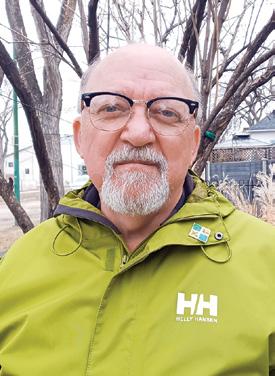
There is no bird more recognized in North America than the American Robin. They are known to many as the true sign of the arrival of spring as their glorious call fills the morning air. After a deep cold winter no one can deny the excitement of seeing their first robin. In fact, you are bound to hear people chatter in the grocery store or at the workplace about their first sighting. Little does this bird know the impact it has on us humans and how excited we are to see them. Although, you’d have to think they are just as pleased to be here with all that singing throughout every neighborhood.
American Robins are most noted for their rusty-red breast in appearance. Robins are a fair size for a songbird and are actually the largest of the
“There is no such thing as alcoholism or an alcoholic.”
In this quote from his book, “Games People Play”, which has sold millions of copies in the last sixty years, Dr. Eric Berne explains, what we refer to as alcoholism is just a juvenile game, no different from many other games which people play when trying to have power over others.
The title of Neil Postman’s book, “The Disappearance of Childhood”, is misleading, it is adulthood, which is disappearing, not childhood. We are no longer able to clearly distinguish any differences between children and most grownups. The modern electronic age has become the centre of society, and literacy has moved to the periphery of individual lives resulting in children who physically grow up but never mature enough mentally nor emotionally to warrant them to be referred to as adults.
The printing press gave access to education for the masses. It was reading and logical thinking which allowed commoners to obtain a degree of maturity. The
Thrush family in North America. Both males and females are similar in plumage with the only difference being the female is slightly paler in colour. The American robin is considered one of the most prolific species in North America, second only to Red-winged Blackbirds.
Robins are not only one of the first birds to arrive but they are also one of the first to start nesting. The female builds the nest on her own in shrubs or evergreen trees. Robins will have up to 3 broods per season and will have 3-5 chicks per nest. The eggs hatch in about 14 days and 2 weeks later the young will fledge. The chicks are fed a variety of worms, insects, and berries. Once they have left the nest they are unable to fly for about another 2 weeks. During this time the parents continue to feed them on the ground secretly
under shrubs and trees. Sadly during this time predators like free-roaming cats and hawks often prey upon the vulnerable fledglings. Studies have shown that only 25 per cent of young robins survive their first year of life. The average lifespan of a robin is only about 2 years but leg bands have shown lengthier life spans up to 14 years. There are 28 species of birds of prey that hunt robins with some of the most common being Cooper’s and Sharp-shinned hawks, Merlin’s, and American Kestrels. Robins spend much of their time on the ground as they search for insects and worms making them easy prey. To encourage American Robin’s to nest in your yard, consider a nesting platform placed in a secluded spot.
The American robin’s diet is a combination of insects and berries. Insects like earthworms, beetle grubs, and grasshoppers make up about 40 per cent of their diet while the other 60 per cent is a mix of berries and fruit like crab apples and Mountain ash berries. When searching for insects, robins use a multitude of skills like their strong vision and sharp
hearing. Studies have shown that robins can hear worms underground, they will tilt their heads from left to right to detect movement in the soil then pounce upon the spot and pull out the catch. Robins take full advantage of human activities like freshly mowed lawns, sprinklers, and freshly turned soil to find food. They will even come to birdfeeders for mealworms, suet, and raisins.
Some interesting facts about robins are:
• it is estimated that the entire population of robins turns over about every 6 years
• during late fall and winter robins can be found heavily intoxicated from eating fruit and berries that have fermented. They have difficulty flying and have been seen falling right out of trees after consuming the berries.
• the global breeding population of American Robins is estimated at 310 million with 45 per cent of that in Canada.
Sherrie Versluis owns the Preferred Perch and is an avid birder.

characteristics associated with maturity are those that are either generated or amplified by the requirements of a fully literate culture: the capacity for self-restraint, a tolerance for delayed gratification, a sophisticated ability to think conceptually and sequentially, a preoccupation with both historical continuity and the future, a high valuation for reason and hierarchical order. True adults want freedom, and they understand, to gain freedom, they must be willing to accept responsibility for their actions and a determination to plan their own life.
Maturity is the ability to handle life’s problems. Immature people do not take their work seriously (if they work at all). In fact, they do not take anything in life seriously and do not accept responsibly. Immature people may have children but give them little nurturing. They have no traditions, have no foresight or serious plans, and they are fickle in religion, politics, and relationships with people. Having no mind of their own and no loyalty they will readily jump from person to person and group to group. Immature people never have
serious or extended conversations, and under no circumstances do they allude to anything that is not familiar to an eightyear-old child. Their sense of humour is juvenile. They are never influenced by rational common sense or scientific evidence. However, they are easily manipulated through emotion and flattery. They will be philanthropic when this gives them a feeling of superiority.
Children tend to be slaves to their bodies. If they feel like eating candy, they will be determined to have it. A grownup who still has this slave mentality may become a voluntary slave to alcohol, caffeine, sugar or any other “addictive” substance or behaviour. Benjamin Franklin, in his autobiography, explains how any person may become a true adult and take charge of their own future. So did Thomas Paine and many other writers who, against many odds, decided to seek maturity and then tell their story about how they became a mature person who achieved what they wanted out of life by taking charge of their own destiny and accepting responsibility for their actions. Frederick Douglass, a black slave who obtained his freedom and became well educated, gave inspiration to thousands of people of all colours who wished for true freedom so they could begin taking full authority for and responsibility of running their own lives and plan-
ning their own futures.
Every person on earth comes from slavery. All of us have ancestors who were slaves. We are all equal in this respect, and nobody is superior to anyone else. We all come from the same place and the idea of class distinction has been fabricated by humans. We are ALL-ONE. However, the more recent a person has come from slavery, the more readily that person tends to be fearful of accepting freedom. Slaves never have to take any blame for what becomes of them. Most former slaves tend to voluntarily remain in slavery. They choose to not take responsibility for their own futures. Many will join the military, others will join a gang, a revolution, or a religious congregation. This compulsion to remain in slavery is not innate, it is learned behaviour passed on from parent to child. The child is made to feel a foreigner to freedom and responsibility. This is why they never mature enough to become a responsible adult. Reading serious books gave millions of slaves the knowledge and tools to move out of slavery and begin achieving what they want out of life. Those who refuse to read are no better off than those who cannot read.
Next Month: Speed
Wayne Douglas Weedon is a Manitoba author who writes a combination of fictional and factual stories, essays, and novels.
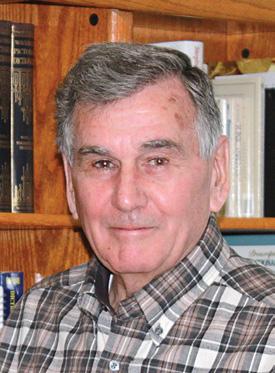
Your investment advisor is always talking about diversification in your portfolio, which, generally speaking, is the right thing to do. Most advisors, though, are very limited in their ability and often lack the incentive to offer you investments in what’s called private equity. But what is private equity and why do so many people talk about it?
Private equity investments are shares of companies that do not trade on public stock market exchanges, hence the word private, and are often managed by private equity firms. These investments are offered only to a select group of investors and often only through word of mouth. These firms also have high minimum levels of investment, typically over $100,000.
The fees associated with private equity are also very high, because companies that make up this space must be rigorously analyzed and sometimes even partly or fully
controlled by the private equity firm making the investment. Hence, private equity firms charge a litany of fees, including performance fees that can sometimes take 20 per cent of your gross investment return.
The promise of private equity, however, is that the investor can profit substantially, over a longer period of time, earning many multiples over their original investment amount. With such a reward, there are also significant risks – the number one risk being you could lose 100 per cent of your investment. The other major downside is that private equity investments typically need time to work, several years in fact. Most investors these days trade stocks far more frequently and do not want to tie up their money that long. Investing in private equity takes considerable discipline and patience and is reserved for sophisticated and accredited investors.
Not surprisingly, most investment firms in Canada don’t like private equity unless certain conditions are met that reduce the potential for risk and often restrict their clients’ investments into larger companies within highly managed and regulated private equity funds. The added regulatory burden increases the cost structure and limits the size of the companies private equity funds they can invest in the larger and more mature companies. This unfortunately reduces the potential for investment returns.
I bet you’re thinking, well, this doesn’t sound good at all. Why would anyone do this? Earlier, I mentioned that diversification is important and one of the great benefits of private equity is that private equity companies are set for early-stage and often massive growth. Great, small, private companies have created a new market, have a new product, or have a new and better way of doing something that will simply take market share away from legacy companies in their sector. This is one of the best features of private equity: innovation.
Also, because private equity is not trad-
ing on a stock exchange, its shares are not subject to the whims of a fickle market during an economic downturn. This means that your private equity investment’s value is potentially increasing and making you money instead of losing it like your “bluechip” portfolio of publicly traded stocks during a market sell-off, like we have currently experienced.
The key is investing in the right company. Aside from what I’ve mentioned above, there are many other factors that anyone considering an investment in a private company should spend time learning about. I am happy to offer advice to people in private equity investments and to discuss how to broach the subject with your investment advisor. It is important to work with your advisor to help you find suitable and direct investments in companies that exist within this space, so please feel free to reach out.
Romel Dhalla, President of Dhalla Advisory Corp., provides strategic corporate finance advice to companies and high net worth individuals and was a portfolio manager and investment advisor with two major Canadian banks for 17 years.

Spring has finally arrived and many of us have itchy green thumbs. I love gardening and working in my yard. It is like therapy to me and brings me so much pleasure. There are many nurseries at my end of town: Shelmerdine Garden Centre, T & T Seeds, D J Paterson’s Garden Centre, A Paterson Beddings Plants, Bosch & Sons Greenhouses, Leclerc M Greenhouses and Canadian Tire to name just a few. Are there any new flowers or plants this year? Should I try something different or stick to the tried and true? This year will be especially important for me as I have offered my yard for tours in 2024 as a fundraising initiative by the Charleswood Garden Club with funds going to One Just City (drop in and warming centre for the homeless). It is always challenging to find plants that the deer don’t like – unfortunately, hosta is not one of them.
In addition to our flower beds, many people also have their own vegetable garden. With the skyrocketing prices of fruit and vegetables, this summer would be the perfect time to try and grow many of your own vegetables. If you don’t have the room to grow your own vegetable garden, there are some spots nearby on the north side of Assiniboine River by the west Perimeter. Plots are available to rent there for very reasonable prices. Many studies have shown us that gardening is an excellent hobby, not just for the money saved by growing your own, but the benefits for both physical and mental health are remarkable. There is nothing better than eating home grown tomatoes – it makes the

ones bought in the stores seem tasteless.
Another part of the greenery in our neighbourhood are the countless parks. Many are just green spaces and many also have playground structures for the children. Even after living in Charleswood for 40 years, I still come across little green spaces tucked away that I hadn’t seen before. Of course, the Harte Trail is the jewel of the neighbourhood in Charleswood; the Grand Trunk Trail is the jewel in Headingley. Both are considered part of the Trans Canada Trail and used by cyclists and walkers alike on a regular basis. At this moment there is actually a feasibility study going on looking at the possibility of connecting the two trails. At the present, many people try to dodge traffic on the highway to cross which is very dangerous. Stakeholders from various levels of government and other stakeholders are looking at the possibility of building either an under or overpass so the Harte Trail and Grand Trunk Trail can be connected.
Two other gems right in our neighbourhood are the Assiniboine Forest and Assiniboine Park. The Charleswood Rotary Club members are the Keepers of the Assiniboine Forest and have just undertaken another huge project to modernize and improve the facilities in the
Forest. They started by erecting a beautiful new sign welcoming people to Assiniboine Forest. Other improvements include increased parking, expanded and improved hard surface and wood-chip trails, and addition of public washrooms, benches and rest areas. Assiniboine Park has also undergone a huge transformation, the most notable being the opening of the Leaf. I was impressed at my visit to the Leaf to walk among the various biomes looking at all of the greenery that is growing there. It was also a treat to see the highest indoor waterfall in Canada there.
The Charleswood Garden Club is a very active group of dedicated gardeners. They often offer free workshops on various aspects of gardening. Check them out at www.charleswoodgc.ca
Another activity is golf where we can enjoy the lush greenery and tree canopies are on one of the many golf courses we have in Manitoba. In my neighbourhood we have lovely Breezy Bend Golf Club, Tuxedo Golf Club and, until recently, John Blumberg. There are also ball diamonds and soccer fields at the community centres. Playgrounds can be found within a 10-minute walk in most cases.
Charleswood and Headingley recently announced the Green Team grants that various organizations in our constituency will be receiving – some for gardening/yard projects and some for recreation. Charleswood Rotary received a grant for some of their work in Assiniboine Forest, Varsity View Community Centre for grounds maintenance, Friends of the Harte Trail for their trail maintenance, and seasonal maintenance of the Charleswood Baseball Field on Wilkes.
So, whether you are going for a walk, run, bike ride or a game of golf enjoy the greenery around you. Take your kids or grandkids to one of the many parks and playgrounds. It is amazing how much better you feel when you spend time outdoors.
Hon. Myrna Driedger is MLA for Roblin and Speaker of the Legislative Assembly.

The following story is part a new feature, the serialization of our columnist Wayne Weedon’s fictional work, Vectors. Wayne is a brilliant writer whose style consists of simple declarative statements that stick in your mind as he leads you through an intricate web of circumstances to reach the lesson he set out to teach.
Continued from May
Iwent to get dressed but I couldn’t find my jeans. I asked Mr. Graham what he had done with them. He brought me a brand-new pair of jeans and asked me to try them on. I mean these jeans LOOKED NEW, they were like, DARK BLUE, and they didn’t even appear to have ever been washed.
I told him I could never wear these pants in public and I asked him where my jeans were. He told me, since they were worn-out and full of holes, he had cut them up for rags. I screamed at him, those were expensive jeans which were supposed to have holes; they were designer, distressed jeans. I called him an idiot. Boy-oh-boy, was I mad. He, however, calmly replied I had been cheated, explaining the jeans he gave me had only cost him $12.97 at Costco.
His friend who works at Costco had told him these were designer jeans with a Kirkland label. I had a conniption. He then told me the holes in my jeans were a code telling the world I was stupid enough to pay good money for jeans which any second-hand store would discard. He asked why I would buy jeans with holes when I could get brand new ones for thirteen dollars. He suggested, rather than being a thinking individual who would take charge of their mind, body, and soul, I was just following the crowd, being more of a sheeple than a human being.
“Sheeple?” I asked him, “what the hell’s a sheeple?” Then, I understood what he meant. I became so angry I could feel my face glowing and my blood pressure rising. I stormed into the bedroom, slamming the door behind me.
As I cooled down, I realised I had no choice, since, other than shorts, I had nothing else to wear. I tried the jeans on and then stepped into the kitchen to show them to Mr. Graham. They were a bit loose, but he told me they would shrink in the wash. He told me to take them off and he would wash them for me. I did as I was told, returning to the kitchen in my housecoat.
After lunch I found Mr. Graham was right; after being washed, the jeans had shrunk enough to fit me nicely. Surprisingly, rather than one pair, he handed me two pairs of freshly washed and pressed jeans, telling me, since they were such a good deal, he had bought
an extra pair.
After getting dressed, I came back into the sitting room. Mr. Graham silently ignored me, but I wanted to talk. I told him about my boyfriend and how I had wasted many months on him.
He gave me no sympathy, insinuating I only got what I had asked for. He advised me to do a little research before choosing my next boyfriend. I asked him what he was talking about. He simply stated, the average person spends more time and effort in buying a new car than they do picking out a lover. He brought up Tempest Tost, reminding me about Hector, a church minister’s son who abandoned prayer and, through planning and common sense, got what he wanted in life. He also mentioned Roger Tasset, another character in the book who, unlike Hector, was devious. Like Hector though, Roger, through planning and common sense also got what he wanted, but mostly by taking advantage of others who would not take charge of their own lives. If you don’t run your own life, Mr. Graham explained, someone else will run it for you. He described how most people are like ships with no rudders, being shoved around by people and circumstances. Roger could get what he wanted from people because they had no sense of direction and readily submitted to what Roger suggested.
By Saturday I was feeling much better, and I started getting that horny feeling when I’ve not had it for a while. Strange, even after Mr. Graham’s lecture, I still missed my boyfriend, despite my admitting he is a cad. I wanted him back in my bed. I had learned to love the physical closeness of a warm body next to mine. He is a very cute boy. Deep down inside, I realised I had known all along he was seeing other girls, but I just didn’t want to admit it to myself. When I had found him in bed with my roommate, I could no longer deny his cheating. If I hadn’t seen it for myself, if I only went by gossip, I know I would have just sloughed it off and pretended it wasn’t happening. I deliberated about phoning him and apologizing even though I knew I’d be sorry in the end. I knew he should be the one to apologize, but somehow, I blamed myself. Maybe, I thought, I hadn’t been satisfying his needs.
Was my desire to make-up because my ex and I had a satisfying sex life and I managed to develop an appetite for that sort of thing? Maybe it was because I could
not allow my roommate to get the best of me and I wanted to get the last word in? Maybe it was because my ex is a jock on the wrestling team and all my girlfriends wanted him, and my having him proved I won the competition? I don’t know. At that moment all I knew was I had a very strong urge to have sex and to wake up in the morning with a warm body next to me.
Leigh Graham, I believe, is good looking and one couldn’t ask for a kinder, more considerate man. He would never cheat on anyone, I knew that. After we ate supper, I had a shower, put on my sexy lingerie, and a little perfume. I made the excuse I would be giving Mr. Graham a treat. Deep down inside, I admitted I wanted sex for myself. I was hot and I wanted satisfaction. Maybe, in a way, I was seeking revenge by using Mr. Graham to get back at my boyfriend?
I removed my lingerie, and I was only wearing my housecoat when I entered the kitchen. I asked Mr. Graham if he would mind reading to me. He told me to sit on the couch and he would get the book. I protested and stated I preferred to lie on the bed. He left and came back with the book along with a pillow and quilt. He told me to lie down on the couch. He wasn’t being very co-operative. I wondered if he wasn’t a bit slow in the head. I became very impatient with him and finally I just blurted out I wanted to sleep with him. He told me he was happy sleeping by himself, but, he stated, if by sleeping, I meant sex, the answer would still be no. I asked him if he didn’t like me and if he didn’t find me attractive. This led to a confrontation, and I accused him of being queer. He didn’t get upset. He calmly stated the price was too high for us to have sex. I felt insulted. I told him I didn’t charge for my services, and I wasn’t a prostitute. I stormed into the bedroom and slammed the door.
As I sat on the bed, I was sick with anger. I had embarrassed myself. I wondered if I could ever face him again. At that moment, I hated him with a passion. There was only one thing to do, I had to get away from that apartment so I could think. I needed some fresh air. Maybe then, I would be able to contemplate and come up a game plan? Could I quickly find another place to live?
Continued next month: Chapter 5, The Runaway
Prof. Hiran D. Dias passed away at the age of 89 on Feb. 28, 2023. He was born on Feb. 25, 1934 in his parental ancestral home in Panadura. His father was Charlie Dias and mother was Freda Dias. After completing his high school education at St. Thomas College, Mount Lavinia, he went to University of Cambridge, UK for Graduate Studies. In the same University in 1962 he completed his PhD in Geography and the topic of this thesis was Cottage Industries of Ceylon (now Sri Lanka).
The elder brother of Prof. Dias’s father (Mahappa) was Mr. Arthur V. Dias (1886-1960) more popularly known as Kos Mama (Uncle Jack). He was a planter by profession, a philanthropist, member of the temperance movement, independence activist, jackfruit campaign pioneer within the island, a national hero and helped educational establishments.
Paternal grandfather of Prof. Dias was Jeremias Dias from Panadura. Ms. Jeremias Dias, nee Selestina Rodrigo (18581933) founded a Buddhist Girls’ School in 1916, Colombo 3. In 1927, Visakha Vidyalaya was established in a 3-acre plot of land on 11th Lane (now Vajira Road). This was an era when girls’ education was not a priority even among effluent families.
After completing his studies abroad, he returned to Sri Lanka and joined University of Ceylon, Peradeniya. There he met his lifetime partner Erika a student of the same university. She was the eldest in the family of three sisters. Her loving father was Junian Jayawardena from Palana, Weligama. University students called her ‘swan’ because she walks as a swan. Their wedding was held on 8th July 1959 in Colombo.
I came to know Prof. Hiran Dias when I was at the University of Ceylon, Colombo Campus as my geography lecturer. He was the Proctor of the Campus and promoted as the President in the late 1960s. He paddled his push bicycle with students wearing corduroy slim-fit trousers and bush shirt through the busy roads in Colombo. In 1972, when the Agrarian Research and Trancing Institute (ARTI) was established, Prof. Dias joined ARTI as a Senior Researcher.
In 1978, Prof. Dias joined the Asian Institute of Technology (AIT) in Bangkok, Thailand as a Professor of Rural Development Planning and later he was promoted as the Head of the Human Settlements Division. At the AIT, few planning service officers after completing the MSc followed short-term courses in the field of IRDP. For the graduation ceremony all faculty members of AIT used to wear a full suit along with different academic outfits; whereas Prof. Dias being very patriotic and proud of his country
wore the Sri Lankan white national dress on such occasions.
In 1985, when I went to the AIT for my MSc in Human Settlements, I met him for the second time. Besides being a lecturer, he was a relation of mine as his wife Erika was a relation of my wife Chandani. When Chandani and my daughter Rowanthi joined me at the AIT (Aug. 1985), the three of us visited Prof. Dias’s home in the city of Bangkok. During that time, we used to meet Prof. Dias, Erika Akka and their two sons Neshan and Agashan very often. I can still remember when Rowanthi was sick, Prof. Dias and Erika Akka took Chandani and Rowanthi to their home in Bangkok for treatment. After nearly one week when Rowanthi was fully recovered Chandani and Rowanthi were dropped at our home in the AIT student village.
After retirement from AIT (1995), Prof. Dias and his wife Erika came back to Sri Lanka and were leading a busy life engaged in various activities. He established a consultancy firm named Vikasitha (Blossom-up) offering consultancy services. In 2009, he was the Chairperson of the Centre for Poverty Analysis (CEPA). He initiated the NonGovernmental Development Organization (NGDO) and the CHAKRA consortium to design and conduct training programmes for Managers of NGDO in Asian Region. During Prof. Dias’s retirement period he closely associated with these activities and his loving wife Erika walked along with him as a shadow.
During the era of pre-independent Sri Lanka, the paternal ancestors of Professor Hiran Dias made enormous contributions for the upliftment of society at large. Prof. Dias fully understood the post-independent situation and in his own way, as noted above, made his own contribution for the betterment of the Motherland.

Prof. Dias and Erika Akka were maintaining their sweet home as an Ashram not only to practice Dhamma daily but also to conduct dhamma discussions with their friends and relations. My dear Sir, your relentless practice of the Dhamma will certainly be of help to shorten your sojourn in Sansara.

Will
The preparation of a will may seem like a daunting task, however, it is essential to ensure that your property is disposed of according to your wishes upon your death. If you pass away without a valid will, the law states what is to happen to your estate.

Power of Attorney
A power of attorney is a document which appoints an individual to handle your affairs in the event you become mentally incapable of making your own decisions. Nothing prevents you from continuing to make your own decisions while you are still competent. A power of attorney is an extremely valuable document to have in place in case anything happens to you which affects your mental ability, such as a stroke, coma or dementia. Health Care Directive (Living Will)
A health care directive, commonly called a living will, is a document which appoints an individual to make decisions with regard to your health care only, while you are alive but unable to express your decisions yourself. This document is distinct from a power of attorney and deals only with health care decisions such as whether life sustaining treatments, such as CPR or blood transfusion, should be continued or withdrawn.

Standard Fees*
* plus GST and PST - Rates are per person.
*Plus GST and PST - Rates are per person.
Home and hospital visits are also available $250.00* (includes both meetings)




Home and $250.00* (includes both meetings)
*plus GST and PST
*Plus GST

